















“These
two
Sixty-nine-year-old Bob Mehrtens from Timaru is a bit of a legend in ploughing circles around New Zealand, winning accolades both in this country and in overseas competitions.



















“These
two
Sixty-nine-year-old Bob Mehrtens from Timaru is a bit of a legend in ploughing circles around New Zealand, winning accolades both in this country and in overseas competitions.


FROM PAGE 1
Mehrtens has represented New Zealand at 14 World Ploughing Contests, making notable appearances in Ireland, Kenya, and Germany. He is a life member of the New Zealand Ploughing Association and a member of the Timaru Ploughing Association.
Among his achievements is a 4th-place finish in Reversible Ploughing at the World Ploughing Contest in Latvia. Domestically, Mehrtens clinched 1st place in Reversible Ploughing at the NZ Ploughing Championships and come out on top in seven South Island ploughing events.
Joining Mehrtens as a finalist in the Rural Sportsman of the Year Award is Neil Evans from Omihi in North Canterbury.
The sixty-five-year-old Evans is a stalwart in sheepdog trials, with a lifelong dedication to the sport. He recently captained the New Zealand test team in the prestigious Wayleggo Cup, leading them to victory over Australia.
His prowess was on full display at the Island and New Zealand championships held
in Warepa, Otago, where he clinched titles and made significant run-offs with multiple dogs. His dog Tess stood out with remarkable performances in securing titles in both Long Head and Short Head & Yard events.
Throughout the 2023 season, he showcased his exceptional skills, qualifying an impressive array of dogs for prestigious championships across New Zealand.
Notably, he managed to qualify one huntaway and four heading dogs for the North Island Championships, an accomplishment requiring a high level of consistency and expertise.
Meanwhile, Samantha Ottley earned her nomination into the Sportswoman of the Year Award after she piloted ‘Takemybreathaway’ to victory at Addington in June last year, marking her 678th career triumph and surpassing Nicky Chilcott as the country’s most successful female driver.
Later that year, she cemented her legacy by becoming the first New Zealand woman to reach 700 winners when ‘Holly Highlander’ triumphed at Methven.
Top performer: Omihi’s Neil Evans and his dog Tess are in the running for the New Zealand rural Sportsman of the Year award after captaining New Zealand to victory in the Wayleggo cup sheepdog trail test against australia.
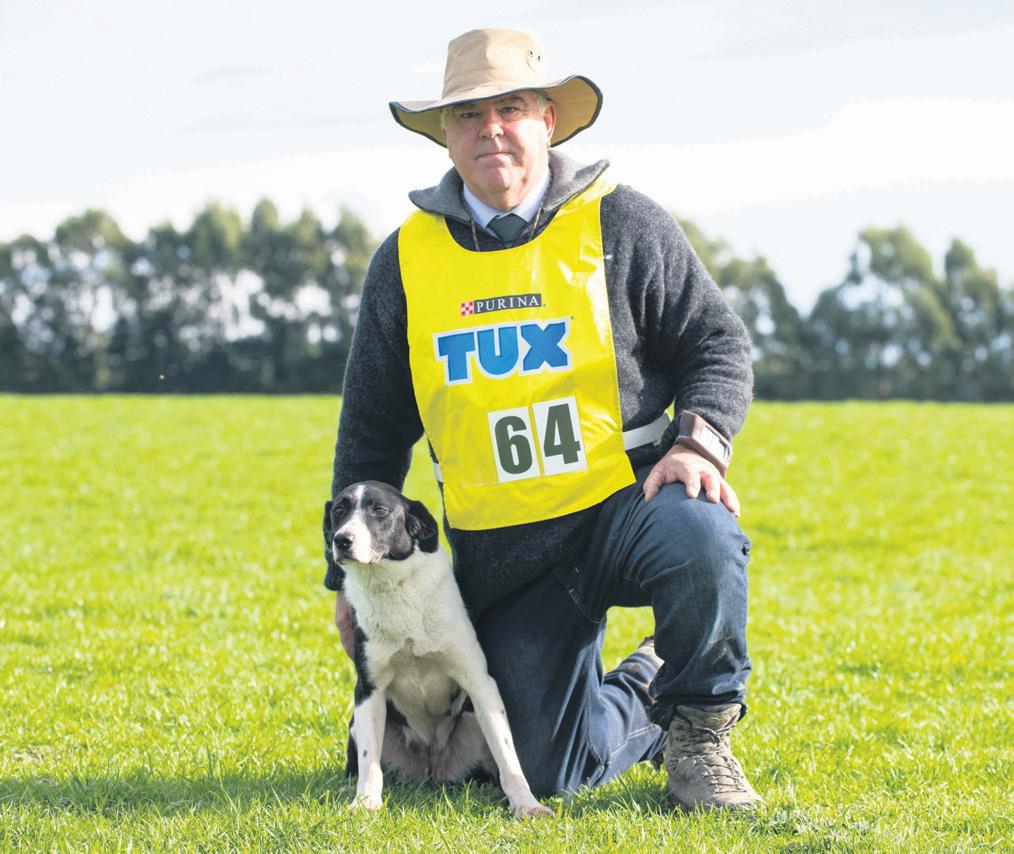
The finalists for each category are:
Rural Sportsman of the Year Award:
Outstanding Contribution to New Zealand
Rural Sports Award:





Bob Merhtens (Timaru), Ploughing; Jack Jordan, (Taumarunui), Timbersports; Neil Evans (Omihi), Sheepdog Trials.
Rural Sportswoman of the Year Award:









Samantha Ottley (christchurch), harness racing; Sacha Bond (Piopio, King country), Shearing Sports; anne Patterson (expat from Blackbutt, Queensland), Timbersports.
Young Rural Sportsperson of the Year Award:
Nigel armstrong (christchurch), harness racing; Bronwyn Troon (Taihape), Gumboot Throwing; Erana Stevens-Tulip (Te Kuiti), Shearing.
Lifetime Legacy Award:
Pat hellier (from Kamo living in Papamoa), highland Games; Wayne Newdick (Taumarunui), Fencing.




clay harris (Mokauiti, King country), Shearing Sports; Wlson house (christchurch formerly Manawatu), harness racing.



It might sound like something out of an Austin Powers movie, but soon tiny lasers maybe employed in the battle against the varroa mite which has been ravaging bee colonies in New Zealand and around the world.
] by Kent caddickDevising a cheap tool for beekeepers to protect bee colonies without using pesticides is the aim of scientists led by Dr Francesco Merola and Professor Cather Simpson at the University of Auckland’s Photon Factory, in a collaborative project with New Zealand’s Plant & Food Research.
The pair will conduct experiments to see if tiny lasers stationed at honey bees’ hives will disable and kill the varroa mite, a parasitic pest.
“It’s an ambitious project which will make a difference all over the world if we’re successful,” Simpson said.
“Varroa mites (Varroa destructor) cling to bees to enter hives but tiny lasers stationed at beehive entrances can target the mites and prevent them from infesting and critically damaging the hive.”
Varroa mites feed on honey bees, larvae and pupae, spread disease, and can cause bee colonies to collapse. As bees have a critical role as crop pollinators, Varroa mites represent a global threat to food security.
“Our goal is to free bees to do their important agricultural work by allowing beehives to thrive again, to be more resilient, healthy homes for bees,” Merola said.
“Challenges will include creating a device easy to fit to the hive which bees are happy to move through.”
The experiments will test how different laser blasts affect bees and mites, working in a containment laboratory at a Plant & Food Research facility in Hamilton.
The University’s Photon Factory is collaborating with Plant & Food Research’s Bee Biology and Productivity Team led by Dr James Sainsbury. Industry advisers include repre-

sentatives of Apiculture New Zealand, Comvita, and the Maori beekeeping industry.
A $1 million ‘Smart Idea’ grant from the Ministry of Business, Innovation and Employment’s Endeavour Fund is supporting the project, which aims to create a device for New Zealand and abroad.
In a five-year plan, research and development is slated to take two years, followed by commercialisation.
Advanced optical spectroscopy methods are key techniques the science team will use to understand the structures of key biochemical components in the bees and mites, including proteins, lipids, and pigments.
Information for this article was supplied by the University of auckland (Waipapa Taumata rau). For more go to: www.photonfactory.auckland.ac.nz

Laser zapper: auckland University’s Professor cather Simpson believes tiny lasers maybe the answer to eradicating the varroa mite parasitic pest which is attacking bee colonies around the world.

‘Our goal is to free bees to do their important agricultural work by allowing beehives to thrive again, to be more resilient, healthy homes for bees.Cather Simpson Professor, Auckland University


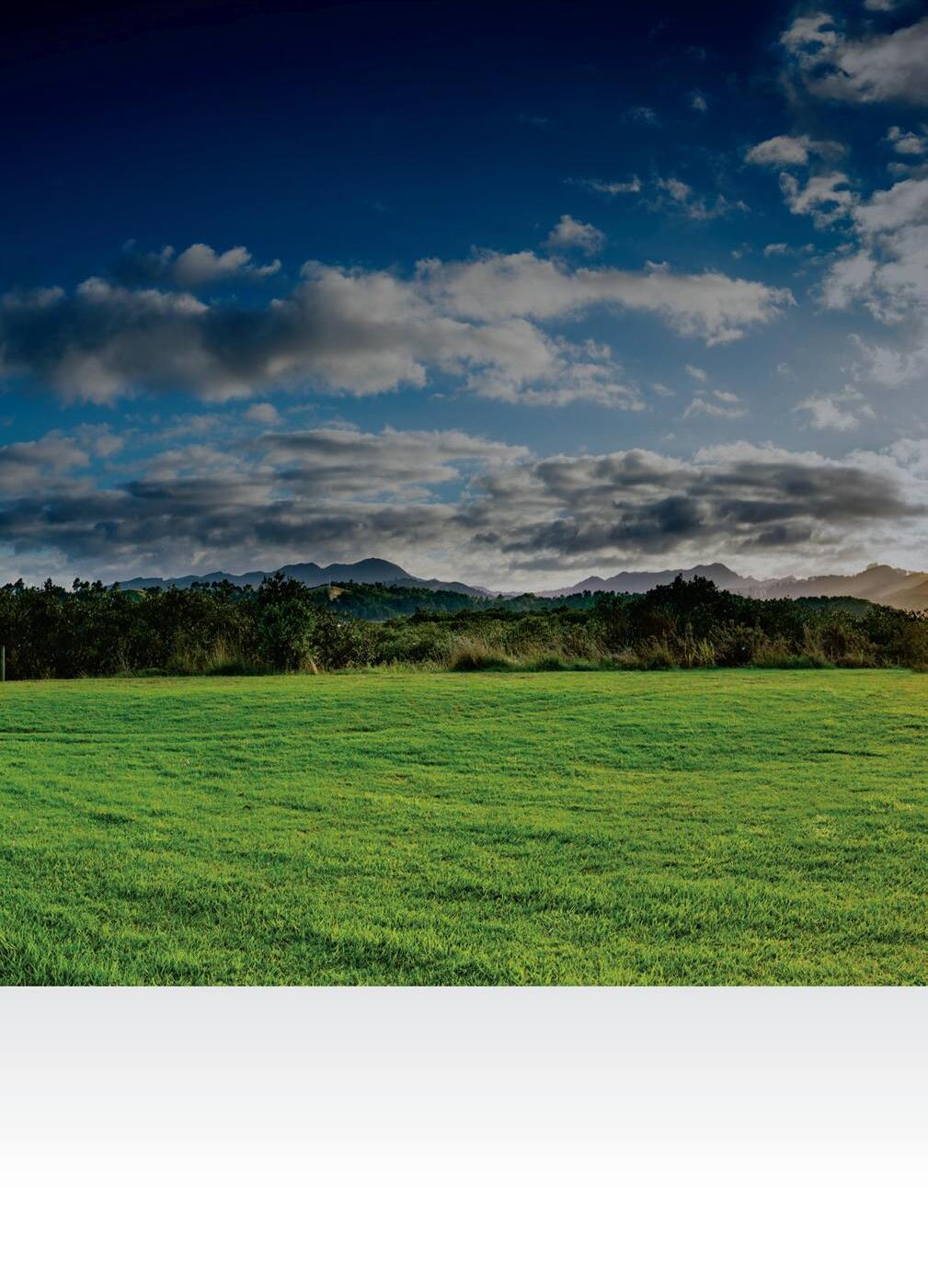











New Zealand is, and always has been, a trading nation. Agriculture is at the heart of trade and a key driver of New Zealand’s prosperity, with revenue from food and fibre sector exports forecast to generate $54.3 billion in the year to 30 June 2024.
] Minister for Agriculture
Free trade agreements (FTAs) currently cover two-thirds of our exports, levelling the playing field for Kiwi farmers, but food remains the most heavily protected and subsidised sector internationally.
Advocating for a better deal for agricultural exporters through reform of subsidies that disadvantage New Zealand farmers was a priority for me when I attended the World Trade Organisation 13th Ministerial Conference as Vice-Chair at the end of February.
Rather than judging success on the number of free trade agreements signed, the Coalition Government is focused on maximising the value of the trade we enable, with a target of doubling the value of exports over 10 years.
That requires more effective leveraging of the FTAs we already have and pursuit of new opportunities.
India, for many reasons, is a strategic priority for our Government.
We are committed to developing a broadbased relationship with India, spanning economic, political, defence, people to people and cultural connections, and one founded on an ambitious longer-range view of the potential.
A commercially meaningful FTA is something we want to see when the time and
conditions are right for both countries.
In its Economic Cooperation and Trade Agreement with Australia, India committed to eliminate tariffs on 70 per cent of its tariff lines, covering a number of key Australian exports to India.
If the same tariff outcomes were extended to New Zealand, and applied to New Zealand’s current trade with India, that outcome would deliver the immediate elimination of India’s 30 per cent tariff on sheep meat and the average 6 per cent tariff on forestry products. It would also halve the tariff on kiwifruit from 30 per cent to 15 per cent over seven years.
New Zealand would expect that our exports to India of these and other products would increase under a future free trade agreement.
But first we need to continue to invest in our relationship, and to reinforce the foundations for negotiating an agreement.
We have been working closely with the private sector also to lift our economic relations with India through increased sectoral cooperation.
New Zealand Trade and Enterprise is currently working intensively with more exporters in India than ever before, and the Government is also working towards a trade mission to India later this year.
Key sectors of engagement for New Zealand companies include aviation, food and





beverage, manufacturing and increasingly, information technology and tech services (health, education, agriculture and general).
There is also interest from Indian companies to adopt modern farming techniques, such as investing in genetics, livestock and disease management, use of technology in farms, and best practice pertaining to feed, milking, testing, and veterinary issues.
Agricultural collaboration in niche, hightech areas will expand our existing primary industry links, and cooperation in horticulture has been identified as a focus area.
Part of growing value is getting more return for what we already export.
Non-tariff barriers (NTBs) – subsidies, customs delays, red tape, and technical is-
sues – are increasingly a problem, affecting almost NZ$10billion worth of trade globally, and it’s estimated that primary sector NTBs account for most of that figure.
Some sanitary and phytosanitary measures, for food safety, animal, and plant health, are long-standing NTBs that have completely shut out New Zealand agricultural exports to some markets.
We will relentlessly focus on resolving these, and other barriers to trade, which restrict access to overseas markets.
That includes with India where, even in the absence of an FTA, there will be many opportunities to remove unnecessary costs and barriers to trade worth significant commercial value to our exporters.




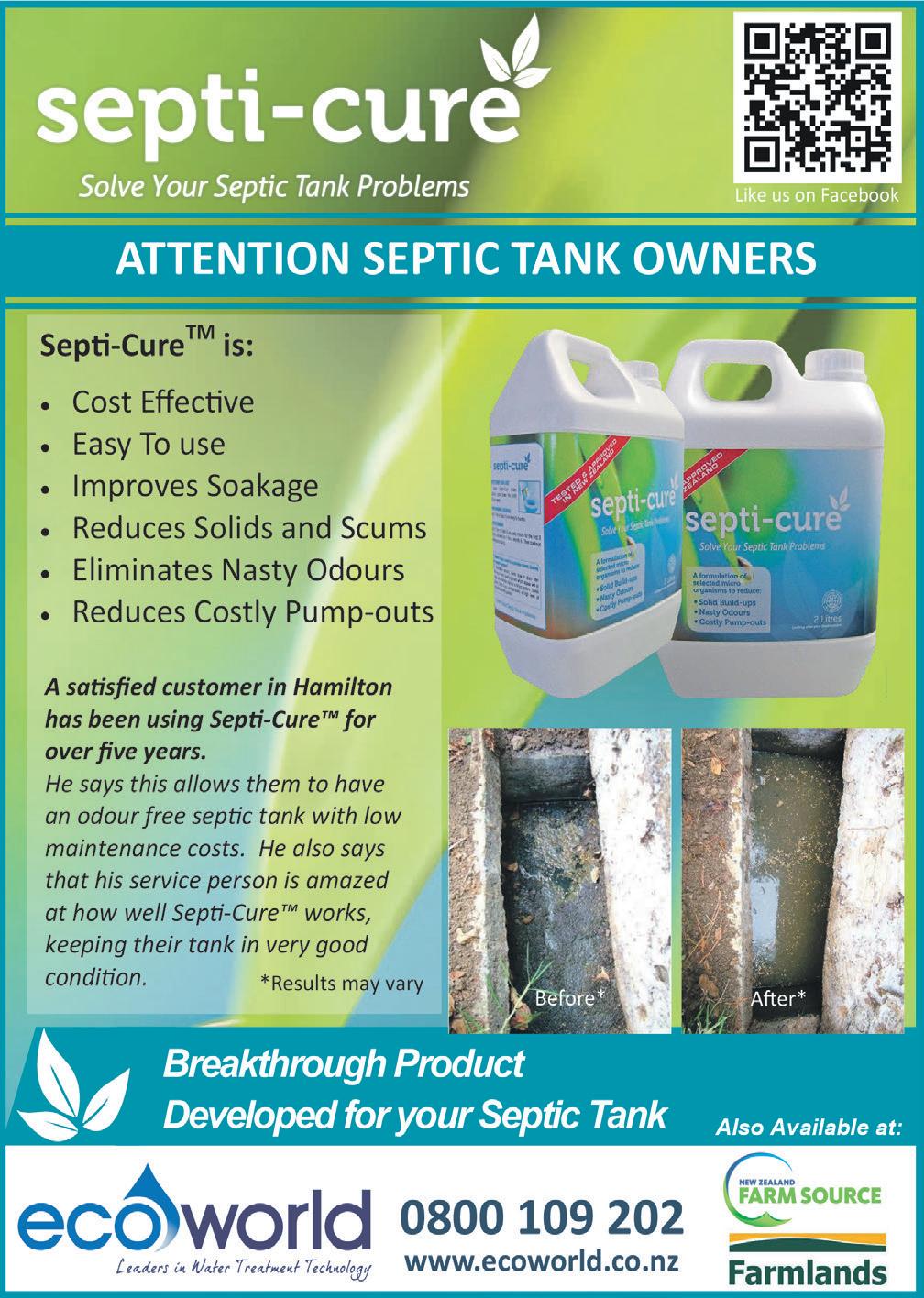
The “sleeper weed” Chilean needle grass could spread through most of New Zealand and eventually cost the country over a billion dollars, according to newly published research.
] by Kent caddickChilean needle grass (Nassella neesiana) is known to have already taken hold in Canterbury, Hawke’s Bay, and Marlborough. Its sharp penetrating seeds cause blindness in livestock, pelt and carcass damage, and the loss in pasture quality and grazing access leads to farm production taking a financial hit.
It is one of approximately 22,000 species of introduced plants in New Zealand and the scientific challenge is to identify those which pose an economic or environmental threat before they become widespread.
AgResearch principal scientist Dr Graeme Bourdot said these “sleeper weeds” can then be prioritised by authorities such as regional councils and the Department of Conservation for management to prevent their spread.
“The exciting part is that we now have the ability through our research to develop models and tools to identify sleeper weeds, predict how and where they will spread in a changing climate, and estimate the economic and environmental damage that would result,” Bourdot said.
“We’ve worked with Manaaki Whenua – Landcare Research on analysing various management scenarios for sleeper pests in general.
“We are currently working with regional councils, DOC and the Ministry of Primary Industries to develop a web-based tool that will enable informed decisions about investing in sleeper weed management programmes.”

Newly published research about Chilean needle grass, by Dr Bourdot and AgResearch colleague Dr Chris Buddenhagen, combined climate niche modelling (to estimate the potential range of the species in New Zealand) and a spread model (to estimate the future economic losses under a “do nothing” scenario) to determine the benefits of stopping the spread.
Under realistic low and high estimates of this weed’s spread rate, where it takes either 201 or 100 years to reach 90% occupation of its potential climatically suitable range cov-


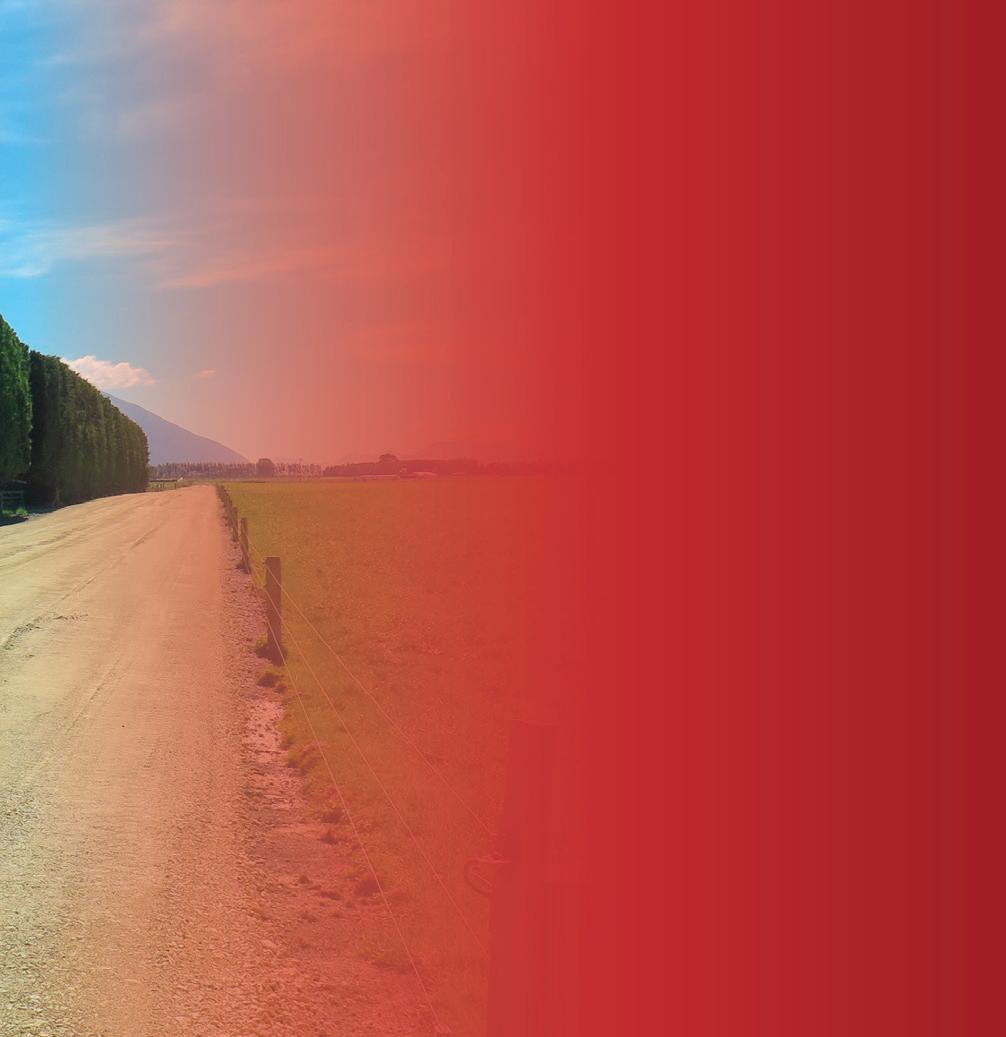




ering 3.96 million hectares, the loss to the pastoral sector is $192 million and $1.16 billion respectively. These losses would justify annual expenditures to prevent the spread of $5.3m and $34m respectively.
AgResearch senior scientist Chris Buddenhagen said this bio-economic modelling reveals that a nationally coordinated approach to managing Chilean needle grass makes best economic sense.
“This would include surveillance in susceptible regions and control measures in the infested regions.”
Threat: chilean Needle Grass poses a billion-dollar threat to New Zealand’s pastoral sector.


If Canterbury farmers or other rural residents believe they have discovered Chilean needle grass they are being urged to report the sightings to Environment Canterbury.
Information for this article was supplied by agresearch. You can read the full research paper, ‘The cost of doing nothing about a sleeper weed – Nassella neesiana in New Zealand’, at www.journals.plos.org/ plosone










] with Jo Luxton
As noted by CEO Miles Hurrell, the lift in price follows five strong Global Dairy Trade events. That’s why I’m particularly proud of the fact that over the six years that Labour was in Government we secured four new Free Trade Agreements (FTAs) and upgraded three existing agreements.
As a trading nation, New Zealand’s prosperity and success relies on our ability to trade freely with the world. These agreements represent significant additions to New Zealand’s network of FTAs. They will build New Zealand’s strategic trade depth, supporting our economic resilience by giving us preferential access into significant markets.
However, this access is not a given and the new Government must work to ensure that we are making good on our commitments to sustainability. This is not only to maintain access to global markets, but also to ensure we are protecting the environment and climate in a way that will allow New Zealand farmers to continue farming for years to come.
I am soberly reminded of this fact with the passing of the one-year anniversary of Cyclone Gabrielle. Events such as this will continue to impact us, farmers especially. They will increase in frequency and severity, and
‘Milk prices are improving, and this is fantastic news, but global demand is uncertain with instability within the world of geopolitics.
it won’t only be cyclones, but droughts and fires as well.
Milk prices are improving, and this is fantastic news, but global demand is uncertain with instability within the world of geopolitics.
As we have seen over the last few years, New Zealand has the potential to be buffeted about a bit by global economic conditions, largely outside of our control. Diversifying industry and focusing on export growth driven by quality over quantity is better for the environment and it is better for our economic resilience.

Fonterra’s increased forecast for farmgate milk prices will be welcome news to dairy farmers this month. ]
Much of Canterbury has been impacted by some extremely hot temperatures this summer and Beef + Lamb New Zealand is urging farmers to consider their options if the dry weather continues into autumn.
Article supplied by ] Beef + Lamb New ZealandAccording to Beef + Lamb New Zealand the overriding message during a period of extreme dry is the importance of early decision making with a focus on four key areas the overall business, feed supply, stock, and land management.
Write a business plan. This plan, which could include dates by which key decisions need to be made, can be shared with the whole farm team. Everyone can then contribute to the plan and support each other through what can be a challenging time.
If the dry persists, consider including the financial impacts on cashflow in the plan and keep your accountant and bank manager informed.
Feed
Carry out a stock take of all available feed, taking into account forecast grass growth, and put together a simple feed budget. This should be reviewed regularly.
Correlating this with cashflow will help with decisions around buying in feed or sourcing off-farm grazing. The earlier these decisions are made the better.
It can be useful to consider what classes of stock can afford to lose weight, how long feed in each paddock will last and what is the order of priority for paddocks according to quality and lasting ability.
Consider water availability. Water stress can significantly impact on animal performance and welfare.
Stock
Plan ahead: Early decision making is key to helping farmers get through extreme dry spells according to Beef + Lamb New Zealand.
Selling stock will obviously reduce feed demand with early decisions often proving less costly.
The advantages of improving cashflow and reducing feed demand need to be weighed up against the disadvantages of reducing capital stock.
Setting priorities for de-stocking and trigger dates can be valuable.
Assess the adequacy of water supply and shaded areas for stock. If necessary, plan to improve both in the longer term.
Try and reduce the impact of the dry on next season’s performance. This might mean sacrificing some poorer performing paddocks to avoid over-grazing other parts of the farm.
For more information on dealing with dry and drought conditions go to the BLNZ website: www.beeflambnz.com



Who do you think should pay for flood and river resilience work? What about consent fees, would you prefer a more streamlined approach? How do we meet the costs of inflation while still providing core services to ratepayers?
] by Peter Scott ] Chair, Canterbury Regional Council ] (Environment Canterbury)Our Regional Council (Environment Canterbury) is gearing up to hear your thoughts on these topics and more as we begin a challenging conversation with the community about our work plan and budget for the next ten years.
The options are all outlined in our consultation document for our draft Long-Term Plan 2024-34.
In it, we ask the question: what’s the cost of taking action, versus the cost of not doing enough?
For instance, we know that over the next decade flood protection infrastructure will be critical to help reduce the risks that natural hazards pose to your property, your business and your family.
In Selwyn, we’re proposing a trial to carry out additional flood and river resilience activities, paid for through a targeted rate to all properties in the Selwyn district. This could be an extra $7.08 per home in 2024/25. What do you think of that?

Other proposals we’ll need your feedback on include a fixed-fee approach for some consent applications, meaning you’d know from the start what your invoice amount would be.
Again, what do you think?
I can assure you that Councillors have spent many hours discussing the various options laid out in the draft documents and trying to find savings wherever possible.
But, as I’ve previously signalled, a significant rates hike is likely as we try to balance rising costs and inflation with the community’s, and Government’s, growing expectations.
We’ll continue to push for Central Government to come to the party, but funding will be tight. We’re walking a tightrope, and I hope you’ll see that reflected in the options put forward.

The proposed work plan could come with a $346 million price-tag for the first year alone, requiring a 24.2 percent increase in revenue we collect from rates. However, the actual amount each property pays will vary – depending on where it is, its value, and the services it receives.
Given the recent change in Government, you may be wondering about the ‘finality’ of this work plan once it’s signed off. As I’ve said before, nothing changes until it changes, that is until we have some concrete policy changes in front of us, the status quo applies.
It’s also worth pointing out that most of our draft plan will centre on our core business, the stuff you elected us to deal with. A lot of it won’t be affected by a shift in direction from Wellington. In saying that, I’ll keep
Speak up: Environment canterbury’s draft Long-Term plan is out for consultation, so now is the time to have your say. Photo supplied by Ecan
banging the drum for Canterbury, and do my best to ensure the region is front of mind for when key decisions are made.
For now, I encourage you to read through the proposed packages and think about whether or not we’ve got it right. You can do this by checking out the consultation document that’s included in the agenda for our February 28 council meeting, which you can view on our website. Then, when we invite public feedback from mid-March, you’ll be able to let us know your thoughts by visiting ecan.govt.nz/whatsthecost.
You’re also welcome to chat with your local councillor. You can find their details under the ‘Your council’ section of ecan.govt. nz. Remember, this is your region and it’s your money. You can influence the work we do, and how much we spend to do it.




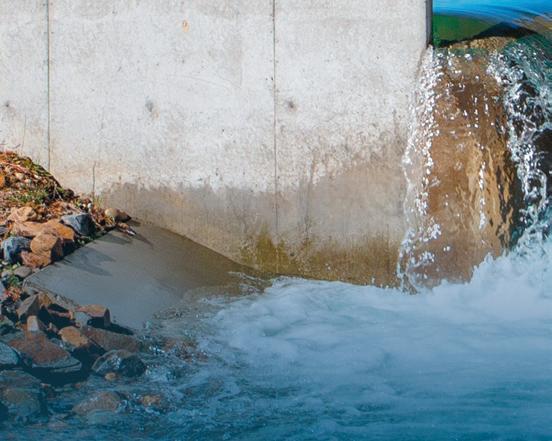




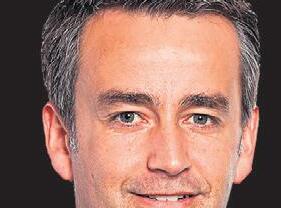








After a rough patch over recent years, the New Zealand stock market has finally delivered some better performance, with gains fairly broad-based across the market.
The NZX has gone up by more than 10% since November, helped by the expectation that the Reserve Bank of New Zealand (RBNZ) might lower interest rates in the year ahead.
As we head into earnings season, expectations are quite downbeat, but we expect to see some companies hint at a more positive operating environment on the horizon. Businesses in New Zealand seem to be feeling more positive about the general economic outlook, even though interest rates are still high. Companies have also reported feeling more optimistic about their own future activity levels.
One clear factor driving our economy is the increasing number of people choosing to live here, with net migration reaching near-record levels. Strong population growth is boosting the demand for everyday goods and services.
More people also means greater demand for housing and we have seen this already through increased pressure on rents, which are rising 4.5% year-on-year. Eventually this
may also give some support to the New Zealand housing market and support a further recovery in prices in coming years.
In 2024 over 50% of the world’s population will be able to go to the polls in nationwide elections, including in the US, India, and probably the UK. The US race looks to be between incumbent US President Joe Biden and former US President Donald Trump.
Major policy initiatives from the two opposing parties are yet to be formally announced, but Trump is generally seen as favouring greater protectionism (suggesting a 10% tariff on all imports) and tax cuts.
Historical evidence suggests that the outcomes tend not to have a major sustained impact on stock market performance, although some sectors may be susceptible to specific policy initiatives.
Economic and market fundamentals play a much greater role in driving market performance than politics, especially over the me-



dium-term. So, while this year of elections throughout the world might bring a bit more market volatility, it is important to remember key investing principles – such as being well diversified and not letting temporary bumps in the road impact your long-term plans.

Outside of the election cycle, geopolitics looks set to continue to capture headlines in 2024. The war between Russia and Ukraine continues, tensions in the Middle East are bubbling, and friction between the US and China remain in the background.
Again, while all these factors can generate a lot of headlines, their impact on market performance to date has been relatively short-lived.
While there is always a risk of external events causing market disruptions these are very hard to predict with any certainty and tricky to hedge against.
This article was prepared as at 31 January 2024 and provides market commentary for the three-month period ending on that date. We appreciate that market volatility and economic uncertainty doesn’t make an easy backdrop for investors. To discuss your investment options please contact andrew Wyllie, who is an Investment adviser and is Forsyth Barr’s christchurch Branch Manager. he can be contacted regarding portfolio management, fixed interest, or share investments on 0800 367 227 or andrew.wyllie@forsythbarr.co.nz. This column is general in nature, has been prepared in good faith based on information obtained from sources believed to be reliable and accurate, and should not be regarded as financial advice.

When you are thinking about your investment options, talk to Forsyth Barr
To get personalised investment advice and portfolio management specific to your investing needs, talk to Investment Adviser Andrew Wyllie in confidence on (03) 365 4244 or email andrew.wyllie@forsythbarr.co.nz





George Helmore commenced practising law in 1884 some 32 years after the first timber millers settled in Rangiora.



 ] with Grant Edmundson ] Helmore Lawyers
] with Grant Edmundson ] Helmore Lawyers
At that time the town’s population was only 1579 and it functioned as a servicing depot and shopping centre for a wide sweep of North Canterbury. It was an area that was described in 1881 as a district where the bone and sinew of agriculture had taken their abode.
When George Helmore commenced practice, it was in a little single storeyed wooden office on the south side of High Street. This office was sold, and Mr Helmore erected a brick faced Georgian Style office at 145 High Street almost facing down Good Street. Next
door at 143 High Street a building was erected and, for a while, this was the branch office of the Public Trust before PGG took it over.
After PGG moved to their purpose-built premises in Victoria Street, the firm took over 143 High Street and used the whole of the two buildings for its expanding practice.
In 1978 the firm had expanded further and a larger premises was needed at which stage the firm moved to 9 Good Street, Rangiora. This was a house owned by the Carmana family.
Mr Carmana was the local fish and chip merchant and he and his wife had five daughters. He had built the house himself, so it had plenty of rooms for all the family. By adding a foyer, a large office and a safe, the house was converted into offices.
There have been many alterations to this building to make it what it is today. The growth of the firm has continued and currently the firm is spread across two offices. Due to the challenges of the expanding firm working across two offices, the hunt for new premises commenced.
The firm is now pleased to have secured a tenancy within a new building currently being built at 190 High Street, Rangiora. The first floor of this building will be designed purposely for the needs of the staff and clients, and it will enable all staff to be in the same

building. All going well, the move to these premises will happen later this year.
The firm name has also changed over the years with the change of partners. When the partners were located at 143 High Street the firm was named Helmore van Asch & Walton. The firm’s name changed to Helmore Smith van Asch & Bowron in 1967 and later to Helmore Bowron & Scott in 1973. In 2014 the
name was changed to Helmore Stewart.
This year the partners have changed the firm name to Helmores to recognise the historic role of the founding partner George Helmore.
It is anticipated that with the extra space in the new building, that Helmores will be able to grow further with the community for many decades to come.






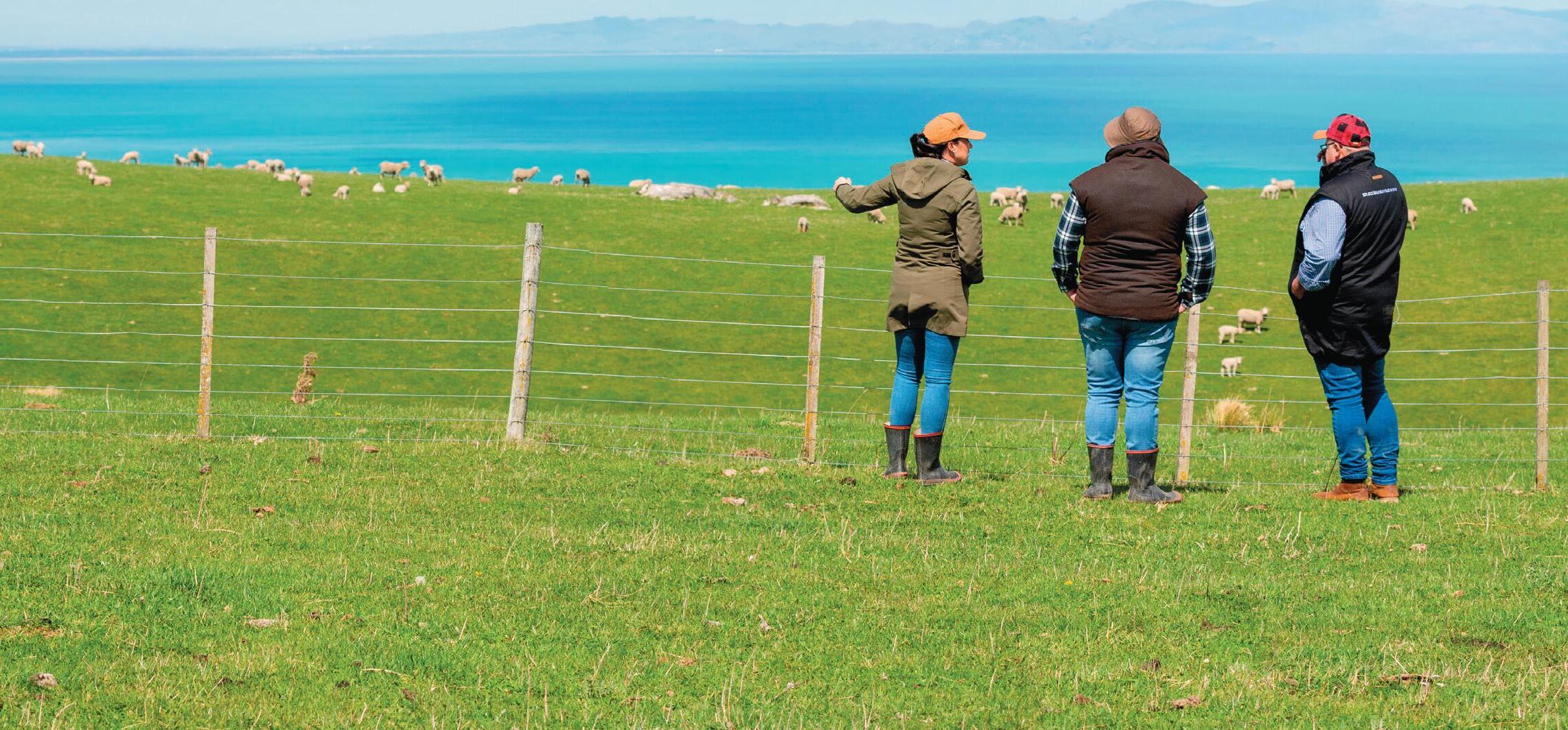







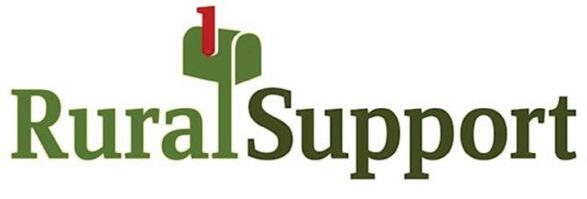


The hot days we’ve been having are pretty fierce so hope you’re staying sun smart and keeping cool.
 ] by Kereama carmody
] by Kereama carmody
The Port Hills and Waikari Valley fires are a good reminder of the fire threat this summer and just another worry along with the threat of drought and its impact on feed and costs.
It’s a busy and stressful time and we can become so wrapped up in keeping on top of things that we forget to make time to catch up with mates or so something we enjoy. Try to take a moment when you can to relax and do something that takes your mind off things.
I was fortunate enough to attend one of the Regional Final events for FMG Young Farmer of the Year in North Otago recently. It was pretty impressive, and I was amazed at how much this passionate group of young people, who are mainly volunteers, got done and what they put together. Especially given that they are all busy farmers themselves.
The Upper Waitaki Young Farmers Club put on a great weekend, with awesome support from the community and from some of the ‘old farmers’ around them.
If you get a chance to go along to or support one of these events, or any other community get together, I’d encourage you to do it. It’s a great opportunity to catch up and have fun. Next one is in Lincoln on the 2nd of March.
It’s going to start getting colder and it’s easy to stay home and become a bit isolated. Connecting to your community and getting involved might seem like another ‘job to do’ but it’s really important for your wellbeing.
Remember to reach out and get in touch if you need a yarn.










The Women’s Health Study is one of the most influential medical studies. This followed nearly 30,000 Female Health professionals who are over 45. It is still going now after 30 years.
One of the many observations was the relationship between Magnesium and Hypertension (high blood pressure).
The study showed that Magnesium intake was inversely related to hypertension; that those with low Magnesium had much higher chances of developing hypertension. Indeed, it seems as if Magnesium can help many conditions including cramp, heart rhythm, mood, sleeping any many more.
This should not surprise because of the special role of Magnesium in governing muscles and nerves.
Calcium is the mineral that causes muscles to work and nerves to carry impulses. Magnesium helps return muscles and nerves to a resting state.
How does Magnesium help hypertension?
Our blood vessels have a special type of muscle called smooth muscle. Just as Magnesium deficiency can cause cramp or tightness in our skeletal muscles, so low Magnesium causes smooth muscle to lose its natural suppleness.
This can impede blood flow and forces the heart to pump harder to circulate blood.
The main mechanism is that Magnesium is a powerful calcium channel blocker (many hypertension medications are calcium channel blockers). This allows the smooth muscle in blood vessels to relax thus allowing for enhanced blood flow.
The challenge is to get the right forms of Magnesium in the right doses. My preference is to use three different forms of Magnesium: Natural marine Magnesium from sea water, well proven Magnesium Citrate and probably the most effective, Magnesium glycinate.
We then need to get the right doses. This is where 1-a-day supplements can be difficult as you cannot modify the dose. My Magnesium has a dosage range of 1-4 capsules so can be customised to a person’s needs.
John arts (adv.Dip.Nut.Med) is a nutritional medicine practitioner and founder of abundant health Ltd. For questions or advice contact John on 0800 423559 or email john@abundant.co.nz. Join his newsletter at www.abundant.co.nz.



•
This
•
• Magnesium Citrate 258 mg
How can Magnesium Triple help?
•
•
•
•
•
•
John Arts comments:
“Abundant
At a time when precision agriculture is gospel, data gathering, and analysis is a time consuming but incredibly valuable task.
Nutrient use is highly monitored, given the cost to all New Zealanders if nutrients are used irresponsibly. If user penalties are driven from incorrect data and assumptions, then the buck may unnecessarily stop with the end user.
The FQC has recently embarked on getting a better understanding of the role fertiliser physical properties play in the precision agriculture space. By utilising the rich source of data from its Spreadmark and Fertmark certification schemes, some incredible insights into nutrient application improvements over the past 16 years have been brought to light.
After reviewing the data from over 3000 spreader tests under the Spreadmark certifi cation scheme (see graph), there has been a 36 percent improvement in the
spreading capabilities of the national fl eet between 2006 and 2022.
The report shows an overall spreading performance increase of over seven metres (from 19 to 26 m) during this time. The current average certified bout width (across all fertiliser products) is now above 27 metres –and still improving.
As both a fertiliser’s physical properties and spreader technology improvements could play a part in this, the FQC are working to introduce further analysis and standards to the Fertmark certification scheme around the physical properties of fertiliser.
What does this mean? Well, you can’t throw talcum powder very far, so the ability to drive and spread at wider bout widths, due to better physical properties and spreading technology, means fewer trips up and down the paddock.
This saves time and money, and reduces the environmental impact, with more precise nutrient distribution and less emissions and
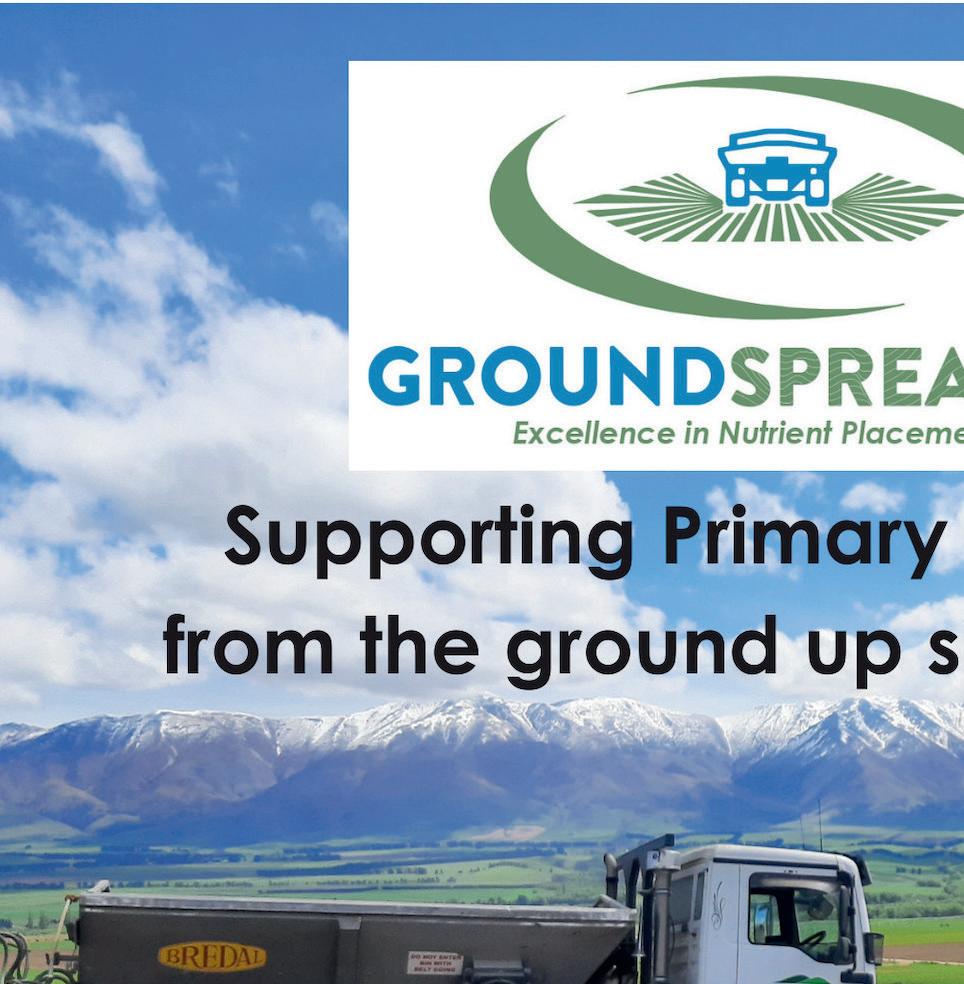




time charged by the driver, saving farmers around $170 million a year.
The agronomic and environmental improvements are probably of even greater value.
Unpacking $170 million of financial gain
While it is impossible to be exact with the saving, the FQC took the following into account:
• Approximately 5 million tonnes of fertiliser are spread annually in New Zealand.
• The average cost of spreading is about $160 per tonne.

• The 36 per cent increase in certified bout widths reflects actual increases in real spreading widths.
• Conservatively, about 75 percent of the contractor’s time is spent actually spreading.
• About 80 percent of fertiliser is spread by contractors.
• Therefore: 5 million tonnes x $160 per tonne x 36 percent improvement x 75 percent utilisation x 80 percent spread = spreading cost savings of about $173 million per annum (and increasing).
For more information, visit fertqual.co.nz




Imagine starting spring with the confidence of knowing exactly which paddocks are going to be sown in new pasture or crops, and even better, knowing they are all ready to deliver great yields of nutritious home grown feed.
] by Mark Shand ] Agronomist, BarenbrugNo last-minute stress, or missed opportunities; just the reassurance of having a solid plan that gives you (and your animals) every chance of a successful outcome.
Is such a thing possible?
Sometimes, but not always! Details of the plan may have to change because the weather between now and then is – as always – a law unto itself.
But you will come much closer to achieving this, simply by starting now. Even if you have to change some details within your plan as the year progresses, you’ll still be better off than if you leave those paddock decisions until later.
Fall back option
Hopefully winter will be kind. But if it’s not, your animals may need somewhere to stand off, take shelter and be fed.
Paddocks that you already know are destined to be cropped or renewed in spring can be useful for this, especially when it comes to protecting pastures and soils that
might otherwise be damaged.
So, looking ahead now can help your wintering plan, too.
Eyes down
You may already have a feel for which pastures need to be renewed or cropped in spring.
But the definitive answer lies in what you see as you’re out and about on the farm this autumn, as well as any grazing records you might have.
Some paddocks will be holding you back, for any number of reasons. Weeds. Poor fertility or drainage. Compaction. Thin, patchy grass and clover. Just like you cull poor performing animals, these paddocks need to be turned around for the long-term good of your business.
What next?
Once you’ve had a good look at the state of all your paddocks, you can make a shortlist of those that will deliver the best bang for buck in new grass or crop come spring.
Start thinking about what you want to achieve from these paddocks in the long term. Do they need to go into crop to give
Array NEA2 perennial ryegrass offers a unique ‘array’ of benefits, including high intake, yield, nitrogen uptake and persistence.
Ask about Array, the new superstar, today.
barenbrug.co.nz facebook.com/BarenbrugNZ


you a chance sort out underlying issues like fertility, weeds, compaction or other issues? If so, what crop will best suit your system?
If they’re going into new pasture, what type of pasture will complement the rest of your farm system? Now is the time to con-
Barenbrug agronomist Mark Shand says a spring sowing plan will help your wintering plan too.
sider tetraploids vs diploids, perennials vs hybrids, different endophytes, and seasonal growth patterns.
Don’t forgot about lequmes, either!
Barenbrug can help; book your free Pasture health check at www.barenbrug.co.nz today.



In the ever-evolving landscape of agriculture, growers are facing a formidable challenge, the burden of compliance.
Article supplied by ] Animal and Plant Health NZThe intricate web of regulations that attempt to enforce a ‘one size fits all’ approach is not compatible with the diversity of the environment in which they cultivate: from soil types, pH levels, specific nutrient requirements to water infrastructure, pest burden and moisture levels. This places unsustainable weight on the shoulders of those working the land. This burden is particularly pronounced in the horticulture sector, where the need for smarter, more tailored technology is evident.
The call for a shift towards technology that aligns with the product grown, soil type, and environmental conditions is resounding among growers, who assert that compliance should not be a one-size-fits-all approach.
Technology that is specific to crops and the unique land conditions is vital. The adoption of analytical tools, such as the Overseer App designed for pastoral farming, has proven to be less helpful for the horticulture sector.
Growers argue that they know their land intimately and understand what practices suitable, and which investments are needed to ensure sustainability.
However, the lack of recognition from regulators for these proactive measures undermines the environmental advocacy efforts of growers, including targeted nutrient recycling and water conservation. Despite the commendable efforts by growers to imple-
ment sustainable and environmentally friendly practices, there is growing frustration over the lack of recognition from regulatory bodies.
The disconnect between the environmental actions taken by growers, such as nutrient recycling and water management, and the acknowledgment from regulators erodes the morale of those actively contributing to a greener agricultural landscape.
The challenges faced by growers are compounded by the uncertain regulatory landscape. Recent changes in land specifications by the Ministry for the Environment and stringent nitrate level requirements pose significant hurdles for growers.
The lack of consistency and certainty in compliance frameworks leaves growers in a state of flux. Moving goal posts creates a precarious environment, making it difficult for growers to plan and implement sustainable practices effectively.
Compliance frameworks often focus on risk mitigation and growers emphasise the benefits of their practices.
As a nation, we need to be supporting our growers in their efforts and recognising their value, which contributes $7 Billion contribution to our economy. The emphasis on environmental stewardship needs to be balanced with recognising the positive contributions made by growers to food production and nutritional value.
Growers also express concerns about the lack of effective tools to manage growing pest





Vital technology: The call for a shift towards technology that aligns with the product grown, soil type, and environmental conditions is resounding among growers, who assert that compliance should not be a one-size-fits-all approach.
and disease burdens. This has left them grappling with the dilemma of how to handle potential biosecurity incursions and elevated pest or disease burdens without losing their crops.
With the dual challenge of managing environmental burdens and potential crop losses, growers find themselves in a fix. Animal and Plant Health NZ is working with government to address this, and arm growers with softer, more targeted and environmentally friendly solutions to managing pests and weeds, many of which are already available in other parts of the world.
The sustainability of farming practices re-
Agri Parts Direct Ltd '" .. ... .,__...
Kverneland • Overum • Kuhn
Lemken• Dowdeswell•Vogel & Noot•Gregoire Besson• Clough • Duncan •Terradisc • Maxitill •Yeoman•Vibroflex
•Connershea•Goliath• IHC• Sunflower•Topdown •Salford• Kongskilde•Napier •Vaderstad
We can also manufacture any point you need!
quires a collaborative effort between growers and regulators. Smarter, more specific technology tailored to the needs of individual crops and environments is essential.
Recognising and appreciating the environmental actions taken by growers, coupled with a stable and transparent regulatory framework, will pave the way for a more sustainable and fruitful future in agriculture.
It is crucial to bridge the gap between compliance requirements and the realities faced by growers to ensure a harmonious balance between environmental stewardship and agricultural productivity.
0800472
563
0800 4

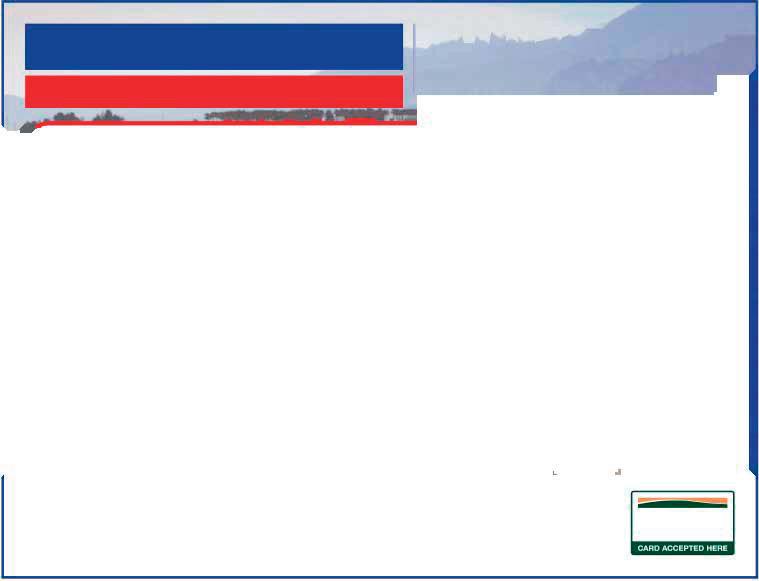

Needham Ag JD750a Seeder parts
Pivot rebuild kits
Bonilla seed tabs, Seed boot mounting repair kits
Boots, Discs, V8 firming wheels, HD gauge wheels and Martin closing wheels

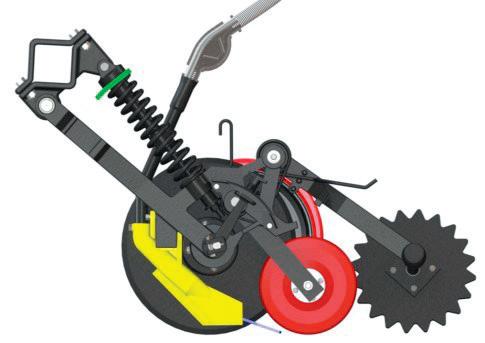

•Maize Planter No -till hardware, Clutches and Controllers
• Shop at our online store!


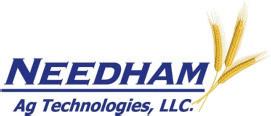


Autumn is one of the two peak times for slug activity and damage. The other is spring but experts warn that just because our weather has been dry, it doesn’t mean slugs won’t be a significant risk.
]Article supplied by UPL NZ
Tom McDonald from UPL NZ Ltd. says the key to slug management is keeping an eye on the potential threat. The company recently released their own environmentally friendly hessian sack specifically for slug monitoring. Tom says it’s recognition that not everyone now has a shed with their own supply of sacks.
“This is a practical and very effective option. Then, when you’re finished with it, you can re-purpose it for storing spuds, or dry feed.”
He recommends putting the dampened sack on the ground in the evening and checking it in the morning. “Even one slug could alert you to a problem you need to address.”
Combining BioGro certification and efficacy, Ironmax Pro from UPL NZ delivers all the slug-controlling properties of industry leader Metarex® Inov, without the risk to companion and farm animals. Or that distinctive smell. “All around,” Tom adds, “it’s just more pleasant to handle and to work with.”
“Previously, people had this perception that if a product didn’t smell really bad, it wouldn’t do the job.” However, he says Ironmax Pro is not only delivering effective slug control, it’s environmental strengths are winning over customers.
“We have been getting some very positive feedback. For the merchants who store
the product, Ironmax Pro has literally been a breath of fresh air. And there have been a lot of comments from contractors, especially, about it being more pleasant in confined spaces – like in their tractor cabs and utes.”
Tom says it also builds in a bit of wiggle room into stock management. “If sheep or cattle break into a treated paddock, you don’t have the same worry. It makes life easier.”
Along with the mistaken belief that BioGro certification means a “less effective” option, Tom says there’s another couple of misconceptions about slug feeding and damage that he’d like to knock on the head.
“The idea that juveniles won’t ingest Ironmax Pro, just isn’t true. Slugs have rasp-like mouthparts (technically – a radula). That is how they feed. They will, and do, happily take this bait. Size and shape don’t matter. Taste does!”
Ironmax Pro’s breakthrough Colzactive® technology gives it exceptional palatability.
Tom says this puts it head and shoulders above conventional baits. Created specifically by the De Sangosse research and development team, Colzactive is made up of specially selected oil seed rape extracts.
Tom says the De Sangosse R&D team evaluated 20 different plant species and identified 50 potential molecules based on their attractiveness to slugs.

“They de-selected to just two molecules from oil seed rape for their outstandingly palatable characteristics. (From the slugs’ perspectives). The slugs actually preferred the bait to seedling, in the trials!”
Ironmax Pro contains the optimized active ingredient 24.2 g/kg ferric phosphate
Slug damage in pasture.
anhydrous, referred to as IPMax. Iron (ferric) phosphate is a natural component of soil. In Ironmax Pro, it works as a stomach poison on slugs.
Effective monitoring saves valuable seedlings. For more information talk to your local technical specialist or UPL.







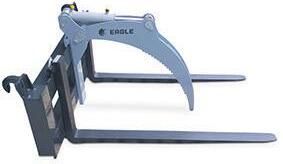










Pioneering plant breeder Germinal is transforming New Zealand agriculture with the world’s first hybrid of white and Caucasian clover.
] Article supplied by germinal.co.nz
Germinal has achieved something special with DoubleRoot—a ground-breaking cross of Caucasian clover and white clover. The result is a cleverly efficient clover that can produce both above-ground stolons and underground rhizomes, combining the advantages of both parent plants.
The technology represents a significant step forward as farmers tackle the challenges of being environmentally responsible while remaining profitable.
Switching to a DoubleRoot cultivar is a no-brainer, effectively gaining two clover cultivars for the price of one. Initially, DoubleRoot behaves like white clover by establishing a deep taproot while spreading above-ground stolons develop and daughter plants establish.
Below the ground, like Caucasian clover, a network of rhizomes is also being formed. These are well protected from climatic conditions like drought and extremely cold temperatures down to – 30degC.
The dual growth habit of DoubleRoot produces a unique plant with the ability to re-
produce and fix nitrogen efficiently and under climate extremes. Farmers who use DoubleRoot are investing in a solution that has a “plan B” established in its DNA, and eliminates the need to sow two clover species.
Global plant breeder Germinal was established in Belfast, Northern Ireland and has world-class research facilities embedded at the Institute of Biological, Environmental and Rural Sciences (IBERS) at Aberystwyth University in Wales, dedicated to developing innovative new varieties. Committed to supporting a New Zealand customer base, a progressive plant breeding site, Horizon Broadfield, has been established locally at Lincoln.
DoubleRoot cultivars such as AberLasting have been performing well on forward thinking farms here in New Zealand. These compelling results and the growing need for solutions to climate change make DoubleRoot a timely innovation.
Gaining the benefits of DoubleRoot for your system is as simple as changing cultivars – with no extra establishment require-



ask for Germinal Doubleroot, a ground-breaking cross of caucasian clover and white clover.
ments, farmers can improve their bottom lines by incorporating DoubleRoot clover into their pasture mixes, helping to take care of the land and minimising their carbon footprint in one step.
Germinal’s Doubleroot is now available from seed retailers. ask for Germinal products by name or visit germinal.co.nz
Introducing AberLasting from our DoubleRoot hybrid clover range. DoubleRoot is Germinal’s exclusive hybrid clover — a cross between white clover and Caucasian clover.
Encapsulating Germinal’s breeding innovation, farmers gain the dual advantages of both varieties in one clover — a winning formula for increased animal performance, soil health, reducing nitrogen and growing a more sustainable and resilient pasture.


DoubleRoot differs from conventional white clover as it produces underground rhizomes and above ground stolons. This unique dual root/stem feature is key to DoubleRoot’s resilience to temperature extremes and treading damage under grazing.
Increase your farm efficiency and decrease your costs with DoubleRoot — a world first.













March signals the end of the Canterbury show season for the region’s Agricultural & Pastoral Associations.
] by Kent caddickKicking off the month will be the Amuri Agricultural & Pastoral Association at Rotherham Showgrounds on March 2, and the season will wrap up on April 1 with the Mackenzie Agricultural & Pastoral Society 126th annual show at the Fairlie Showgrounds.
In between the Amuri, Cheviot, Mayfeild, Methven, Oxford, and Malvern A&P Associations will all host their annual events. The Hawarden A&P Association’s annual show, originally scheduled for March 16, will not be held.
The Malvern A&P Association will mark a significant milestone when it holds its 125th annual show at the Sheffield Domain on Saturday the 23rd of March. Founded in 1899 the Malvern Show is one of the oldest in the Canterbury region.
The 108th Methven Show will be held at the Methven Show Grounds on Barkers Road on March 16. One of the highlights of the show will be the Gift Calf and Gift Lamb competitions in which farmers in the Methven area generously donate calves or lambs to be auctioned off at the Show with proceeds going to the beneficiaries of the Methven A&P Association. In addition to the auction, prizes will be awarded for Heaviest Gift Calf, Heaviest Gift Lamb and Gift Lamb on the hoof.
The Methven Ute Muster, which was first held in 2021, is fast proving to be a show favourite. The competition attracts a wide variety of vehicles across the following categories: Best presented/cleanest; Best paint job; Pre 1984 (Vintage); Tradies Ute; Dirtiest/Roughest Ute; Best Sign Written; Best accessorised; Best modified; Shepherds Ute; American Pickup. Entries are accepted on the day.
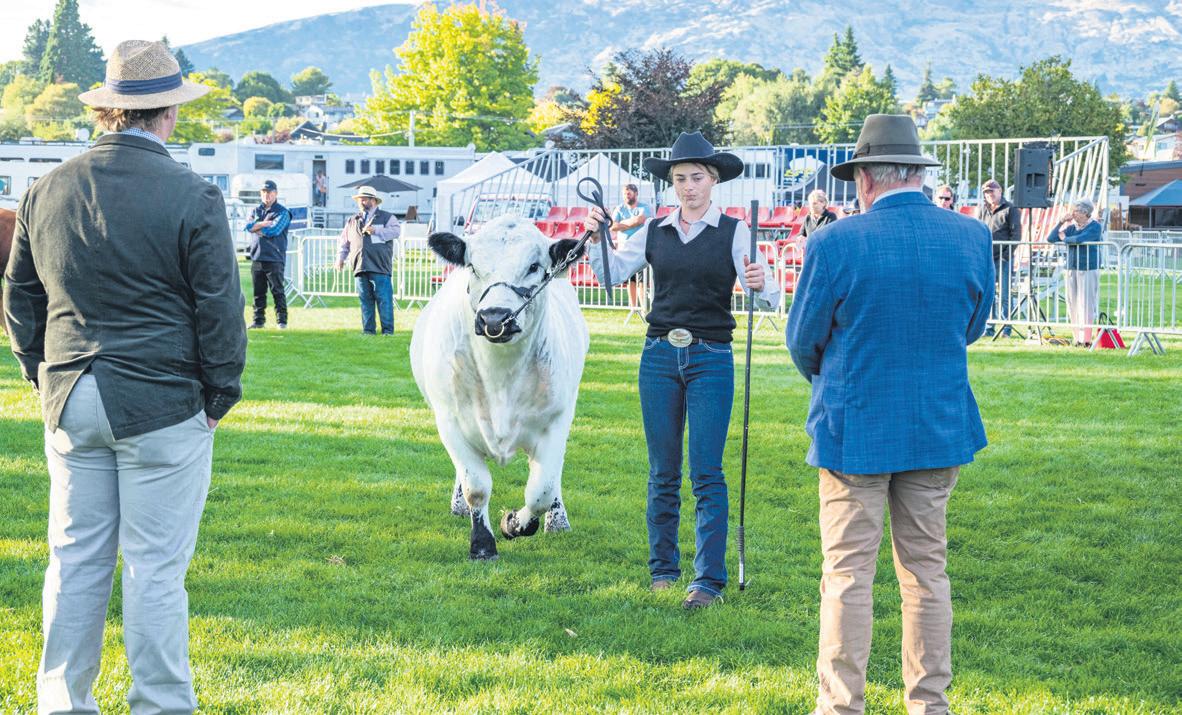
The final A&P show for the summer will be held on Easter Monday (April 1) when the Mackenzie County Agricultural & Pastoral Society holds its 126th annual event Fairlie A&P Showgrounds.
The Mackenzie A&P Highland Show is one of the largest one day shows in New Zealand with over 12,000 through the gates.
One of the highlights of this year’s show will be the Heritage livestock and Rare Breed display.
One of the organisers of the display is Megan Hopkinson of Timaru, who is also involved with the Rare Breed Conservation Society which runs an annual event at New Zealand Agricultural Show in Christchurch.

Judging: Judges cast their expert eyes over an entrant into the cattle section at last year’s Wanaka a&P Show.
“Rare breed displays are so important for the promotion of New Zealand Heritage livestock conservation along with many of the endangered international breeds,” Hopkinson said.
“The rare breed display is an educational heritage farm experience and all our volunteers are animal owners and members of the Rare Breeds Conservation Society of New Zealand.”
Breeds on display will include the African Four Horned Sheep, Swiss Valais, Arapawa Island sheep, Canterbury blue pig, and the New Zealand Waipu goat which is facing extinction.
The Barwoods stage, sponsored by Fairlie Early Learners, will feature Josh Grimaldi, Ed-
die Simon Music and the Jae Bedford School of Entertainment.
Further south the Wanaka A&P Association hosts its 87th annual show over two days on March 8 and 9 with over 40,000 expected through the gates over the two days.
Held at the stunning Wanaka Showgrounds, this year’s entertainment line-up is a tribute to homegrown Kiwi talent, with performances from the iconic comedy-folk music duo The Topp Twins, veteran country musician Barry Saunders and Lyttleton-based string band, The Eastern.
It will also bring the traditional A&P Show drawcards of classic carnival rides, agricultural and livestock events, a Kids’ Zone and the world-famous Jack Russell race.







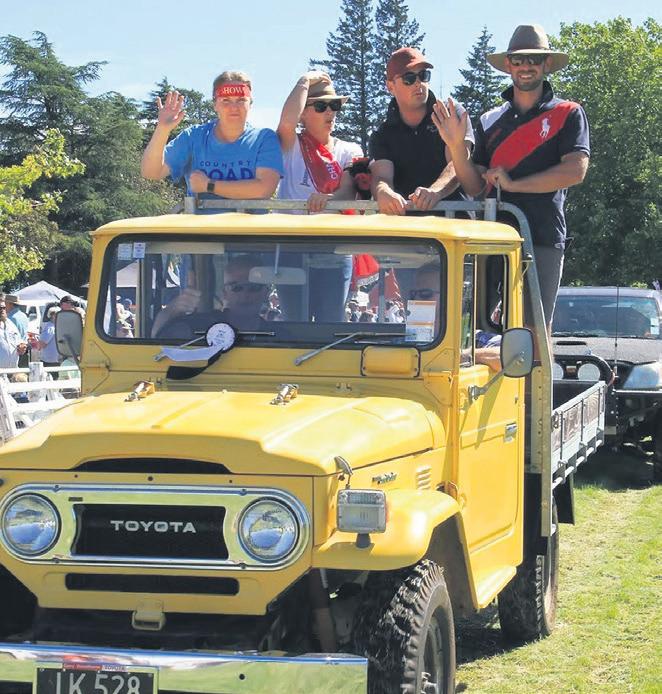



March 2
amuri agricultural & Pastoral association, rotherham Showgrounds
March 9
cheviot agricultural & Pastoral association, cheviot
Mayfield Agricultural & Pastoral Association, Mayfield A&P Showgrounds
March 16
Methven agricultural & Pastoral association, Methven a&P Showgrounds
March 23
Malvern agricultural & Pastoral association, Sheffield Domain
March 30
Oxford agricultural & Pastoral association, Oxford Showgrounds
April 1
Mackenzie county agricultural & Pastoral Society, Fairlie Showgrounds






Drought is synonymous with North Canterbury summers, when the region frequently records New Zealand’s highest temperatures, and historically, these dry summers and frequent droughts have made farming difficult.
The introduction of irrigation in the early 1980s transformed farming in the Amuri Basin, making businesses more resilient, strengthening the community, and cementing the district as one of the most productive in the country.
Irrigation schemes now play a key role in collectively helping farmers to use water more efficiently. Amuri Irrigation Company (AIC) delivers water to 130 farmers from two rivers via an open race and 130km modern pipe network and knows healthy land and water is essential for the survival of farming businesses.
They’re supporting their farmers to make better decisions via ‘Amuri Basin Future Farming’, a $2.5 million project with support from Ministry of Primary Industries’ (MPI) Sustainable Food and Fibre Futures Fund, Environment Canterbury and DairyNZ.
This four-year partnership programme is geared to accelerate irrigated farmers towards a future of sustainable farming and build on AIC’s existing strategy to farm beyond regulatory minimums.
The project has a combined focus on the environment (freshwater, climate, and biodiversity), farm profitability and community resilience and is designed to be farmer-led, to proactively tackle their shared challenges.
This project is being run in parallel with AIC’s other infrastructure projects, bringing water storage and hydropower generation to
the area. Together these projects give farmers the confidence to invest in their businesses and the knowledge to be resilient in the face of climate change.
The core approach of the project involves the formation of small, farmer-led groups dedicated to enhancing farming practices within their catchment areas. There are 13 groups across the Amuri Basin, each with a Farmer Lead who assists AIC’s facilitator to drive group meetings, get the most relevant information out of the technical experts and ensure the group is well represented at wider catchment meetings.
The catchment groups enable farmers to set goals that address the specific challenges faced by the group members. The technical support provided gives them confidence that their decisions are backed by sound science. Those decisions form the basis of a group action plan, which while focusing on the improvements farmers need to make for our environment, also consider farm profitability and resilience.
“Our understanding of farming’s impact on the environment has evolved, and we’re using that knowledge to help our farmers plan for the future,” says Mike Hennessy, AIC’s Environmental Projects Lead.
The collective approach results in greater long-term buy-in compared to farmers working in isolation. Everyone benefits from fresh ideas and support to embrace change and achieve their goals.
TO PAGE 21




•
• Great back up and
FROM PAGE 20
Meetings in September 2023 were timed to fit in with the busy springtime farming schedule, with a focus on irrigation efficiency.
AIC’s Operations Manager Matthew Morgan presented each group’s collective water usage data from the last five years, emphasising the need to understand on-farm soil moisture to make good irrigation decisions and reiterating the tools available to assist with achieving 90% irrigation efficiency.
Group members agreed to share their individual water usage data to allow for open discussion around good management practice.
To continue to support groups with using the tools at their disposal, four training sessions were organised with the main suppliers of soil moisture sensors to the Basin’s farmers, Onfarm Data Ltd (Aquaflex soil moisture tapes), Water Metrics, Waterforce and Wildeye.
These suppliers met with the current users of their products, to ensure that meters were installed correctly while providing guidance on getting the most out of their meter data. Farmers were encouraged to book individual on-farm sessions to obtain specific assistance from their supplier.
Additionally, Andrew Curtis of Primary Insight, former CEO of Irrigation NZ, presented two sessions of an irrigation efficiency workshop which fulfilled the FEP action for irrigation management training.
Tailored support towards improving onfarm irrigation was also available to farmers through one-on-one sessions with Mike Hennessy, resulting in a variety of positive behaviour changes, such as installation of additional moisture meters and upgrades of systems to improve the information available to them.
Farmers are utilising the data from the seven additional weather stations AIC installed in late 2023 to record rainfall, evapotranspiration and temperature and engaging
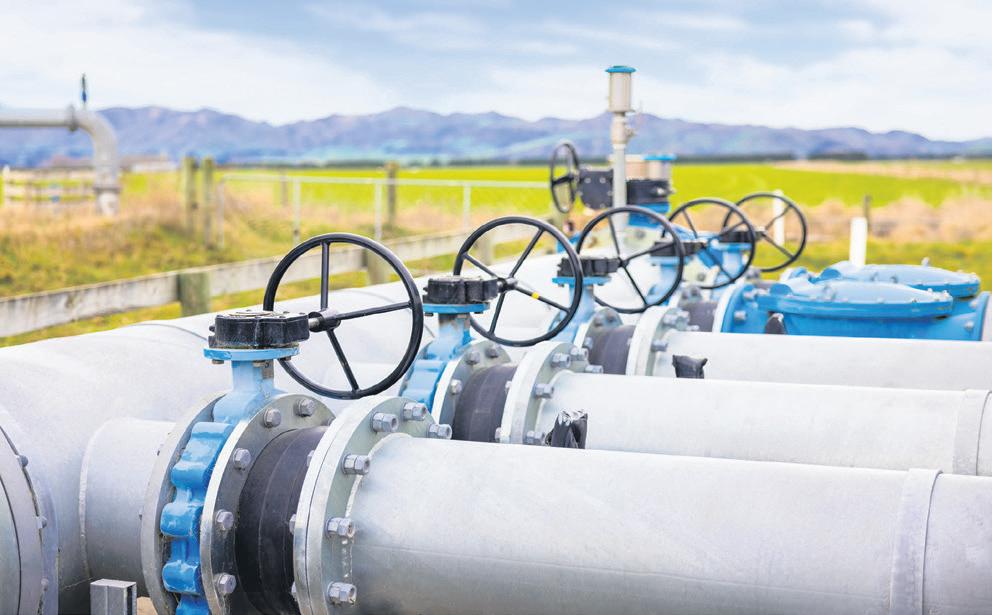

Connected: The amuri Irrigation company delivers water to 130 North canterbury farmers from two rivers via an open race and 130km modern pipe network.
in discussion on the outcomes of the decisions they’re making.
Regular surveys allow AIC to benchmark changes, both on-farm and in mindset. In June 2023, 83% of farmers surveyed said they could start changing how they farm straight away to achieve better environmental outcomes.
In November 2023, 81% of farmers who said they were able to implement changes in the way they run their farming business for environmental outcomes had done so. Additional planting and fencing around waterways, reducing water use and improved crop management were the predominant changes made.
The majority considered that they are better equipped at this point to make decisions for their farming business.
The provision of information and data was considered the most helpful thing AIC could do to assist with improving their environmental outcomes.
“This project is giving all of us a better understanding of sustainability and the information and data we need to make the best decisions for the way forward. We want to improve water quality and leave this place better for the next generation. We may be one farm in the Basin, but we’re all connected,” says James McCone, farmer, AIC Board member and Chair of the Project Governance Group.
In December, AIC hosted the inaugural AIC Awards, designed to acknowledge the successes of their shareholders in irrigation efficiency and environmental intiatives. The awards recognise leadership, innovation, the standout operator from the perspective of AIC’s Auditing team, and the farm with the highest percentage of days with accurate orders versus consumption.
Additionally, two collective awards recognise the catchment groups who have shown the greatest initiative and stood out in terms of irrigation efficiency. The intention is to
‘We want to improve water quality and leave this place better for the next generation. We may be one farm in the Basin, but we’re all connected.James McCone Farmer, AIC Board member, Project Governance Group Chair

host the awards in December each year and spark some healthy competition – with the ripple effect of improved environmental outcomes – amongst farmers.
While farmers are working in groups, AIC is utilising all the technical data it holds, which has been gathered over many years, to develop a risk-based modelling system showing what on-farm and catchment-based mitigations, such as wetlands and bioreactors, can achieve. This ensures the right solutions are in the right place.
Currently, the project is planned for another three years, with the intention that the outcomes become a permanent way of working for the catchment groups involved. Ideally, this would be driven by the farmers, but AIC will continue to invest and manage any scaled mitigation opportunities and drive performance.
Protecting and enhancing their land is important for their shareholders’ businesses and the Amuri Basin community into the future.
Look forward to further updates.









] Article supplied by Work Safe NZ
Storing and using petrol and diesel creates workplace hazards that could harm employees, family and others living or working nearby. Therefore, petrol and diesel are also regulated by the Health and Safety in Employment Act 1992 (the HSE Act).
The Hazardous Substances and New Organisms Act (HSNO) requires a person in charge to manage hazardous substances at all workplaces that store or handle them.
On a farm, this will normally be the farm owner or manager. They must make sure the farm complies with all the rules set under HSNO.
The person in charge must:
• make sure people handling the substances are trained or supervised
• make sure information is available to the people handling the substance via
container labels, safety data sheets (SDS) and signs
• make sure procedures are in place to deal with any potential emergency involving hazardous substances
• get the necessary test certificates and keep them up to date.
They should also identify all hazardous substances on the farm and keep an inventory.
Fuel storage and handling is hazardous because petrol and diesel are flammable. You can control these risks by storing fuels securely and safely.
Separation distances are the minimum distances required between fuel stores and other properties or activities. The separation distances for petrol in this guide allow petrol storage on farms without a location test certificate. You can reduce these separation distances if you get a location test certificate.
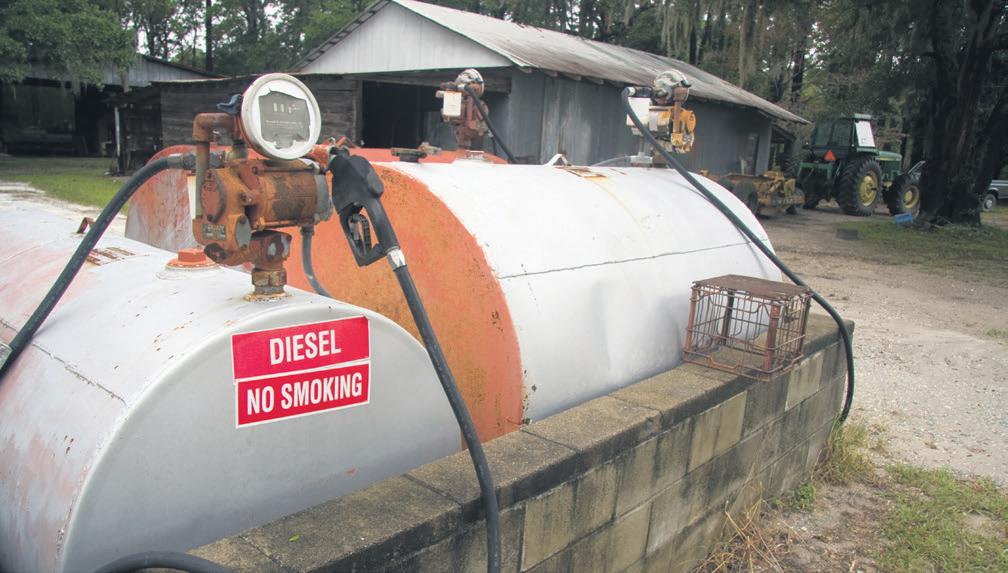
All fuel must be stored:
• at least six metres from other hazardous materials, for example: oxidisers, fertilisers, poisons
• at least six metres away from flammable materials, for example: hay, LPG, other fuels
• so that spills can’t contaminate stock feed
• so that spilt fuel can’t touch any heated surfaces to avoid accidental vehicle crashes


• so that spills will not pollute streams, lakes or waterways
• so that spills will not endanger buildings.
Petrol and diesel also have specific storage requirements, depending on how they are stored.
For more on storing fuel on farms go to: worksafe.govt.nz/topic-and-industry/agriculture/ chemicals-and-fuels-on-farms
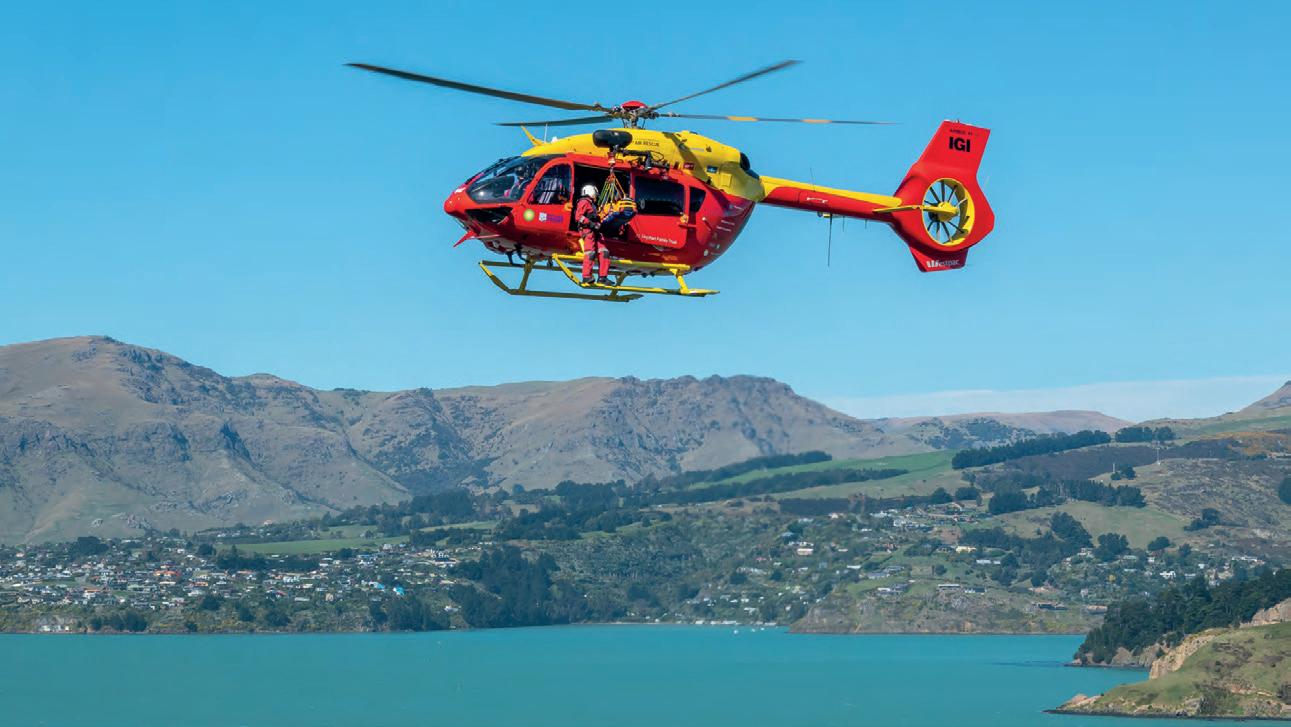


















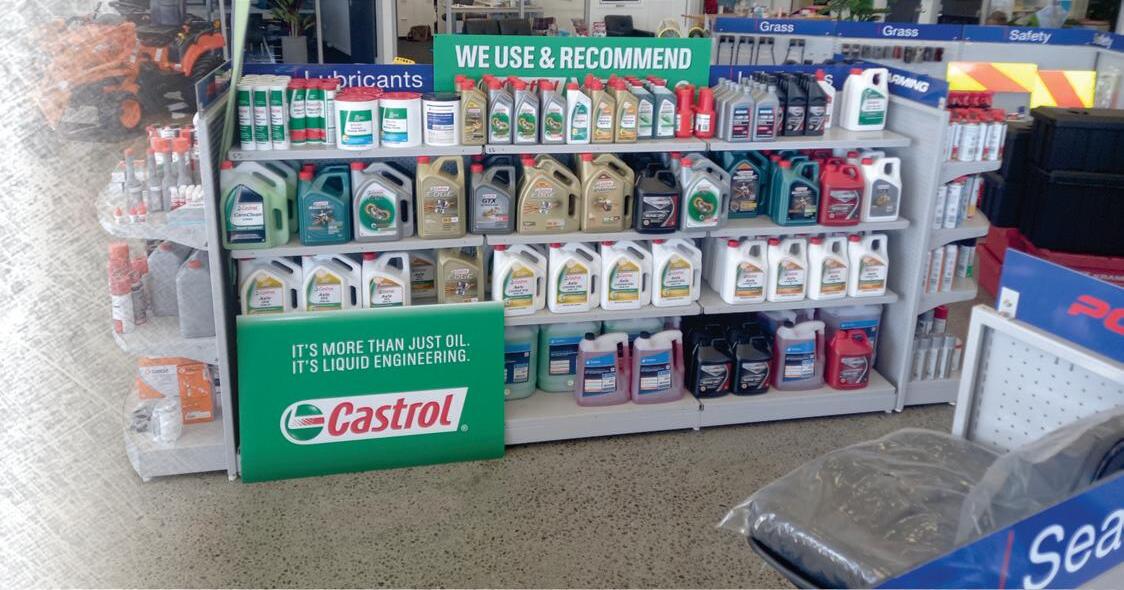






Nuvola and Senstera have partnered to bring a cost-effective and reliable IoT tracking solution to market for New Zealand’s rural community.
]Article supplied by Nuvola Solutions Nuvola’s Bolt, Oyster and Yabby products are cellular (4G) based asset and vehicle trackers designed to be attached onto anything you want to keep track of the location of.
Depending on the device, they also can have additional features and information that can be reported.
Each device has a GPS chip to track its location, when the device has a cellular signal – it sends off the location data (and any other information) to the Senstera platform which provides a user with a map and tools to view the device’s movement history.
However, anyone who lives rurally will know that cellular signal can be patchy or scarce on some more remote properties and so to make sure that no data is lost, if the device has no cellular signal it will store the data on-board in its memory, and, as soon as it has a signal again, it will begin uploading it to the Senstera platform.
GPS tracking equipment or vehicles in rural settings is especially important when you may not have 24/7 visibility to all parts of your property (e.g. a shed/yard behind a shelter belt) or are out working at various locations during the day or night and not always on site.
Having your assets tagged with GPS trackers and supporting software that provides 24/7 monitoring allows you to view where something is, where it’s been during the day and even set up notifications and alerts for unexpected movement of the device – say a farm truck moving outside of working hours.
If something does go missing, you have the information on where it’s gone to assist with organising recovery too.
Having GPS tracking on your vehicles can also be a huge benefit towards improving safety for your workers and loved ones. For lone workers, this may mean if they haven’t arrived back at the yard when expected –someone in the office is able to look up where the vehicle is and get help to them if needed, or for families this can mean keeping track of people making a long drive home regularly.





While all the Nuvola devices in this range are cellular trackers, they each have different use-cases:
The Bolt is a plug and play device for any vehicle with a standard OBDII port. In addition to location, it also tracks things like vehicle speed, harsh braking/acceleration, battery voltage, and accident alerts as well as alerts for if it is removed from the vehicle unexpectedly. These are $285 with monthly plans from $12.50.
The Oyster is an ultra-rugged (IP68/IK06 rated) battery powered device great for placing out of sight on trailers, farming implements, farm bikes or even on boats. These devices are $370 + batteries with monthly plans from $12.50.




The Yabby is similar to the Oyster except much more lightweight and with a smaller form-factor meaning it is better suited to being placed on things like kids’ bikes, ride-on lawn mowers or even animal collars. These are $299 + batteries with monthly plans from $12.50.
The monthly charge covers the cellular SIM card and access to the Senstera platform to view location and add or manage alerts/notifications with multiple devices able to be managed by one Senstera account.
An important thing for us at Nuvola and Senstera when developing this range of products was the cost.
The devices on offer are commercial fleet-grade products that are widely used
overseas, and we’ve extensively tested ourselves in NZ to make sure they’re reliable. We’ve worked hard to price them to be accessible for every-day users and small businesses with monthly plans from $12.50 per device which includes the Senstera platform to view your data in.
Nuvola and Senstera are thrilled to be able to bring this excellent product to New Zealanders and have even more Internet of Things devices available and in development for many other use-cases whether they be commercial or at home.
To find out more contact David or Alex at Nuvola Solutions on 0800 688652; email: sales@nuvola.nz or visit their website: www.nuvola.nz
















Another lift in CFR prices in China with a small reduction in sea-freight rates saw another good price increase for February at wharf gate prices. This has taken us over the 90-percentile of the market of the last two years.
Continuing positive signs within China, suggest robustness and positivity not seen for some time. This year being the year of the Dragon may not mean much to your average Kiwi, but for NZ people on the land who produce food and fibre destined for China, this is a positive.
As I saw many times in my pre-Covid visit to customers in China, mood and confidence is everything. This time around some of that will be to do with the Dragon, and a lot to do with the Chinese Government which has announced measures that should provide further stimulus. Most commentators are suggesting it will be much later in 2024 before we will see those packages hit where they need to.
The current China New Year celebrations and holidays has seen a reported 9 billion Chinese make a trip back to family from their workplaces in the cities. If they each spent ¥500 to ¥1000 to make the trip (about NZ$150-$200), that is one heck of a lot of doe-ray-me circulating around the nation.
The are many tempering factors in China that cannot be ignored. Some may yet play out to result in another challenging year for NZ food and fibre producers despite some elements looking better.
The collapse of Evergrande as the largest construction company in China has had major reverberations and will have for some time. The spill over affects, include massive
apartment redundancy and plummeting real estate prices.
The China Government has stepped in to protect those who paid a deposit for their apartment that will not now be built. They have also lowered the Required Reserve Ratio (RRR) to allow banks to extend their load book.
They have also channelled close to US$14billion into the construction sector, including stimulating low-cost housing. For these reasons, Kiwi Forest growers might be swayed to the positive in terms of what 2024 might hold.
However, underpinning a bold front portrayed by the Government that western journalists have sometimes called propaganda, the China share-market has lost about US$3trillion in the last 3 years, thus, business and investor confidence are weak.
There are also underlying population tensions, some ex-pat Chinese are talking dissent and untruths being portrayed by their Government with Western media hungry to listen to and hyper the stories to a point it is difficult to decipher reality. What is a certainty about the China ex-pat comments is it will be best they do not go back to China for a holiday.
Meanwhile back in good old NZ and a nation still recovering from a Labour government espousing their own propaganda stories like ‘we’re fine’, I am continuing to see sawmills wanting to talk log supply. They are also saying the order book is filling up nicely.
The one negative I am consistently hear-
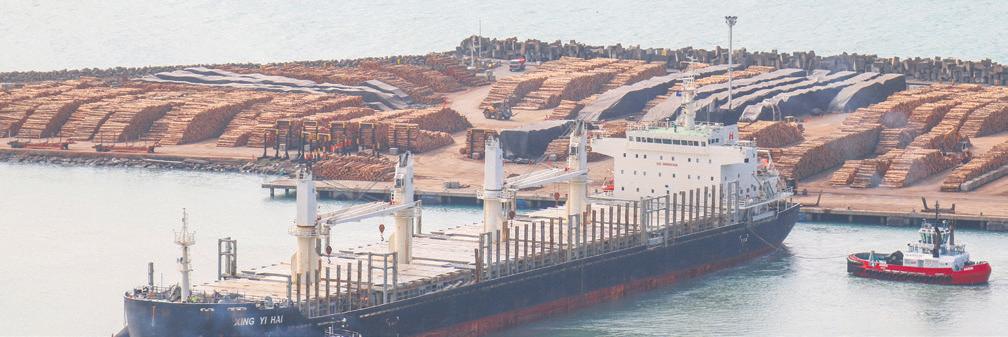
ing about is recruiting staff. One sawmill owner has been constantly advertising for months and has had a handful of responses from kiwis who he described as “unsatisfactory”. This was a polite way of saying their passion for drug taking and or bone idleness far exceeded their passion for work.
One sawmiller was particularly frustrated when I advised him of a person who recently applied for an IT job to find she was one of 400 applicants. Seems to be something wrong there with where our fair nation is heading.
In terms of the NZ forest industry, all eyes are on the Lake Taupo area Cyclone Gabrielle harvest which has been pumping 15,000
tonnes a day into a market that wants the fibre. That harvest is starting to wind down and should now be finished by May.
All eyes are on how the harvesting and transport capacity will spread back in to harvest in other regions. The rest of us are hoping our national harvest will drop and the China supply/demand planets will thus be better aligned. How this plays out will have a potentially significant impact on log prices in 2024.
As always, please remember the thoroughly important message, “it remains, as always, fundamentally important, the only way forward for climate, country and the planet, is to get out there and plant more trees.”







Rural Cantabrians will be able to subscribe to receive notifications to their mobile phone when MetService issues a Red Warning for severe weather or if there is an Extreme Fire Danger risk.
] by Kent caddickThe partnership with Fire and Emergency New Zealand will help Kiwis be aware of and ready for our most extreme conditions. All that is required is to have the free MetService NZ Weather app installed on your mobile phone and the location specific notifications enabled.
Fire and Emergency Wildfire Specialist Rory Renwick said they encourage everyone to download the app, enable notifications and heed the advice when notifications are received.
“It may be best to postpone a fire or any activity which could cause sparks, –always check further on checkitsalright.nz. It’s also a good prompt to prepare your property should a wildfire occur.
“The MetService app is a trusted source of information which close to a million people have downloaded to their phones. Weather conditions are one of the main factors that impact fire risk. This makes it the perfect place for our extreme fire danger notifications,” Renwick said.
“Fire danger awareness has become much stronger since we started running the fire season information on MetService’s website – notifications were a natural next step.”
MetService Head of Weather Communication, Lisa Murray said getting notifications directly into the hands, or pockets, of those likely to be impacted is the most direct way we can warn people.
“With climate change and more extreme weather events, this tool is really helping us better prepare Aotearoa New Zealand for a more extreme wildfire and weather environment,” warns Lisa Murray.
The location specific push notification for Extreme Fire Danger will be triggered when Fire and Emergency Fire Weather System calculates the fire danger to be at its highest level (extreme – where fire intensities and spread rates are likely to make a wildfire extremely dangerous).
These are sent in the morning and provide that day’s timeframe for when fire danger is extreme and spark-causing activities, including lighting fires, should be avoided.
MetService will trigger notifications when Red Warnings for severe weather are issued for specific locations. These warnings are for the most significant and impactful heavy rain and/or strong winds (like those brought by ex-tropical cyclones) or heavy snow, covering an area of more than 1000 square kilometres (equivalent of a box around Lake Taupo).
Severe Thunderstorm Warnings are considered Red Warnings, though they cover a smaller and more localised area, their lifethreatening impacts (flooding from downpours, hail and strong winds and lighting) make them very dangerous events.
“When a severe thunderstorm has been detected on one of our weather radars a Red Warning notification will be triggered,”Murray said.





Warning: canterbury’s rural residents can now get warnings for severe weather conditions and extreme fire danger risks sent directly to their cell phones.
“Warning time is therefore much shorter than with other types of Red Warning weather, but a heads up will likely be signalled earlier in the day by a Severe Thunderstorm Watch issued by our forecasters.”
Sher said the notifications have been sometime in the making and follow a successful testing phase with members of the
public to ensure ease of use and no false alerting.
When people enable notifications, they’ll be prompted to set notifications for their home location and/or enable current location notifications which will provide alerts if they are in the warning area when a notification is issued.
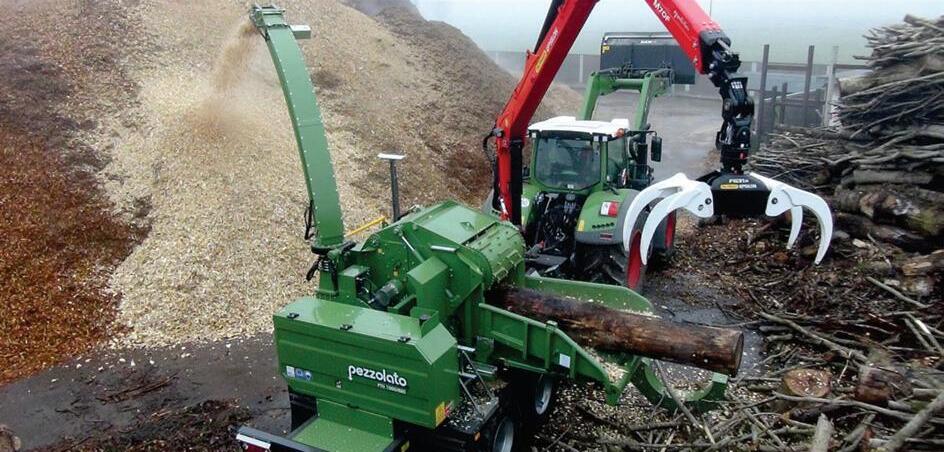
Domestic maize silage and feed grain growers are set to benefit from New Zealand farmers opting for home grown supplementary feed options according to AgFirst Waikato consultant Raewyn Densley.
Densley said dairy farmers’ reliance on imported palm kernel expeller (PKE) as a supplementary feed faces headwinds amid shifting consumer preferences and environmental obligations to reduce greenhouse gas emissions.
“This will drive farmers to look for supplementary feed options closer to home, providing opportunities for domestic maize silage and feed grain growers,” Densley said.
“From a crop perspective and for the New Zealand arable industry that is quite an exciting thing, because crops like maize have much lower GHG emissions than PKE.”
Speaking at the Foundation for Arable Research’s maize conference in Hamilton, Densley said significant expansion in the dairy industry between 1990 and 2020 led the national herd to lift by 2.6 million cows to 5 million and production to increase by 132 kg of milksolids/cow.
An extra 730,000 hectares was converted into dairying, much of this arable land in Canterbury.
“This led to a massive increase in feed demand on dairy farms from 9.3 to 23.6 million tonnes of drymatter eaten a year, driven by more cows, more hectares, and more production per cow.
“Over time, we have gone from a pasturebased dairy farm system to one that is still pasture-based but is also quite reliant on other feed.”
About 15 to 20 per cent of what New Zealand dairy cows eat isn’t pasture, but supplementary feed including PKE, a byproduct of the palm oil extraction process, fodder beet and maize silage.
Use of harvested crops (eg, maize silage and feed barley), as well as grown supplements, (eg, fodder beet, kale and swedes) is increasing by 5.6 per cent a year. Imported feed, particularly PKE is increasing even more, by 9 per cent each year.
“We think we are a pastoral dairy system

and relatively self-contained, but 11 per cent of feed used to feed our cows is produced internationally.”
Globally, New Zealand is the biggest importer of PKE at 21.3 per cent, with most coming from Indonesia and Malaysia. Densley said that raises sustainability issues.
“Globally there is a western consumer trend away from palm oil, with a lot of big companies backing research into alternatives. Consumers are also turning away from dairy products made from cows fed PKE, with Fonterra placing limits on PKE use by its milk suppliers.
“Consumers want milk products with a low GHG footprint but PKE has issues with deforestation, methane production from palm

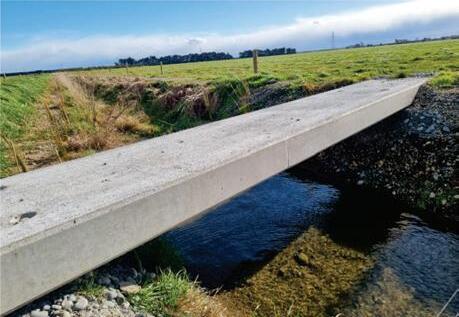

oil extraction and much higher carbon losses than pasture, maize silage and grain.
“While New Zealand farmers are just getting their head around their GHG obligations from a government perspective, the reality is that the world has moved on. Consumers are not just interested in on-farm losses they are also interested in embedded losses associated with farm inputs.”
She said climate change means farmers will continue to need more than just pasture
Homegrown: Maize crops have much lower greenhouse gas emissions than imported palm kernel expeller.
to sustain their herds but there is likely to be a move away from internationally-produced feeds.
“While buying in locally-produced crops will be the preferred option for some farmers, others may investigate dropping their stocking rate and cropping on farm.”
Information for this article was supplied by the Foundation for arable research. For more information go to: www.far.org.nz
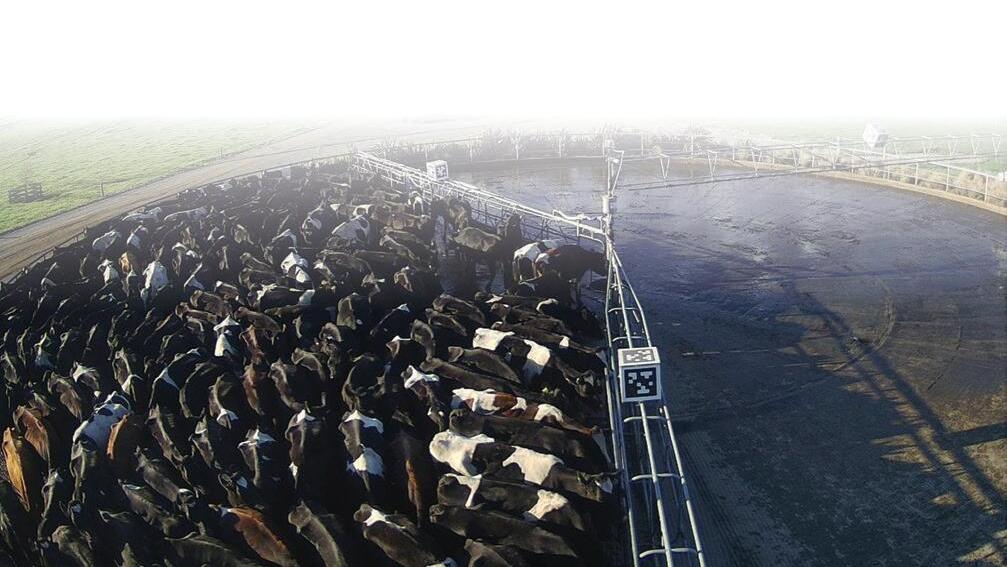


A New Zealand and Ireland joint research programme which started in February aims to better understand methane emissions from pasture-based farm systems.
Article supplied by DairyNZ
The four-year programme will see researchers, students, professors, and database technology experts from DairyNZ (NZ) and Ireland’s Agriculture and Food Development Authority (Teagasc), University College Cork and Irish Cattle Breeding Federation working together to quantify methane emissions from dairy cows in pasture-based systems.
DairyNZ principal scientist Jane Kay said they aim to determine the effect stage of lactation and pasture species, management and seasonal growth have on base methane emissions, and how these factors influence cows’ response to methane-reducing technologies.
“The joint programme strengthens our connection with Ireland and enables NZ to leverage current and future research. It also fits within DairyNZ’s wider research programme,” Kay said.
“This wider programme sees our worldleading scientists working with NZ farmers, research organisations and commercial companies to develop workable and scalable mitigation solutions that can be widely adopted on-farm to reduce emissions in a sustainable and viable way.”
DairyNZ was awarded funding in 2023 for this work, as part of a pilot joint research initiative between New Zealand and Ireland.
The programme will also develop a methane database for pasture-based systems to
ensure emissions and mitigations are accurately accounted for at a farm and national level in NZ and Ireland. Both countries face national and market targets to reduce methane.
“Consumer and dairy supplier expectations are a driver for dairy farmers to continue reducing emissions, so NZ can remain competitive in the market, and DairyNZ’s continued research supports that,” Kay said.
“Finding solutions to help farmers reduce emissions while maintaining on-farm profit remains a research priority.”
She said over the past 20 years, potential technologies to reduce methane emissions have emerged from all over the world, and DairyNZ is focused on potential technologies that fit within NZ’s pasture-based systems, such as early life intervention, which involves feeding a natural product to young calves, with the aim of reducing methane emissions for the animal’s lifetime.
“This is an attractive delivery mechanism for NZ, as it’s cost-effective and occurs well before product processing, such as milk harvesting.”
Most of the research on methane mitigation technologies is completed at Lye Farm, one of DairyNZ’s two Waikato research farms.
Kay said farmers are involved in all the projects, to provide their thoughts and advice on opportunities or barriers for adoption of these solutions into NZ farm systems.

“We’re excited about our continued work alongside farmers and other sector and research organisations to develop mitigation
Research: DairyNZ principal scientist Jane Kay says the joint programme strengthens connections with Ireland and enables New Zealand to leverage current and future research.
solutions for our unique pasture-based farm systems – and to get ahead of the environmental challenges farmers face.”

























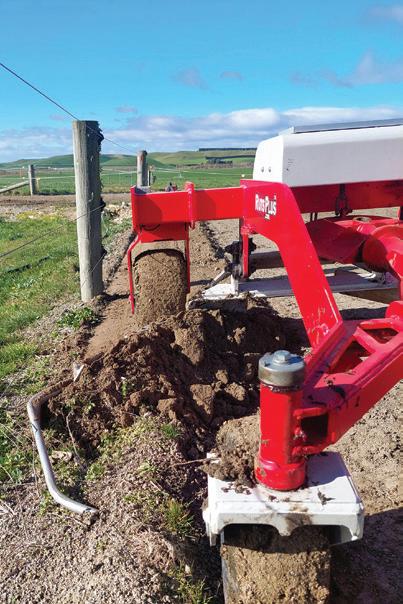



















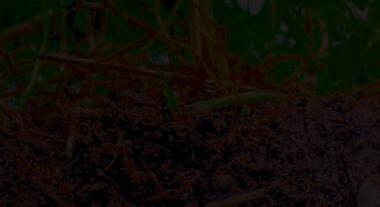



Our first farming work was in the Bay of Plenty just below the Kaimai ranges bush line where the clearing of trees had recently stopped.
Those that had cleared the land knew that the most productive pasture grew on areas where the best bush had grown, and it’s the same throughout the country.
The valley floors and lower terraces were cleared before the steeper less productive land. However, pasture has a different fertility requirement to bush and to maximise growth nutrient was required.
Consider the following from Grasslands of New Zealand by Sir E. Bruce Levy 1970 with the Forward by Brian Talboys the then Minister of Agriculture: “Sir Bruce showed that once the land had been satisfactorily drained and a reasonable grazing management imposed the greatest factor of all in promoting botanical changes in grassland was soil fertility.”
Phosphorus and sulphur inputs during the last 70 years have ensured that there is very little country now that positively responds to the application of these two elements.
“He stressed the tremendous impact that the grazing animal had in pasture development sparked off initially by copious clover growth from topdressing grasslands with appropriate fertilisers. Under a high stocking density per acre, so that there is full utilisation of pasture growth, the dominant rye grass-white clover pasture approaches perfection in building soil fertility.”
What was obvious then and remains true today is that grazing animals have a positive impact on the development of soil fertility.
When we talk of soil fertility the key component is soil carbon and it is under grazed permanent pasture that carbon is more rapidly sequestered than under any other form of vegetation.
The reason being that rapidly growing
plants are regularly grazed, adding dung, urine, leaf, and dead root on an ongoing basis. Carbon is continuously being added, and with abundant beneficial soil biology a portion becomes stable and resistant to loss even under the harshest environmental conditions.
Steeper land becomes less prone to slipping, moisture is better retained providing stronger growth during summer.
There is no downside to this process and the prosperity of New Zealand has profited greatly as a result.
How is it that now, within two generations, famers are considered by many to be environmental vandals contributing to an increase in harmful warming gasses?
Where carbon is being steadily sequestered net carbon dioxide, methane, and nitrous oxide are not increasing, and yet models have been developed that further tax the productive sector which we will, for the foreseeable future, all be dependent on for the bulk of our income.
However as in all arguments there is an element of truth. Not all pastoral farming is equal and the dairy sector is where the problem lies.
Synthetic nitrogen destroys soil carbon releasing the nitrogen it is bound with for plant uptake. Burning soil carbon at a rate greater than it is being sequestered results in less
growth, more expensive inputs, and lower profitability.
Fixing nitrogen with clover does not do this. It’s a natural process where supply and demand are roughly equal with little nitrogen lost to groundwater.
Quality and quantity go hand in hand. As pasture production increases under clover dominant pasture, strong, resilient animals requiring less medication evolve.
There is scientific data to show that land under intensive dairy in the Waikato has steadily lost carbon at the rate of 1 tonne/ha over the last thirty years, the time since the advent of regular applications of nitrogen.
This process can be readily reversed, as an increasing number of farmers are discovering. Autumn is the ideal time to implement new soil fertility practises that immediately provide positive outcomes in all respects.
New Zealand farming, said Sir Bruce “still needs more and better grass, more and more stock, and keen farmers intent on bringing this position about.” He emphasised that greater farm production is not the responsibility of the farmer alone, it is a national responsibility.
To discuss this further call Peter on 027 495 0041.


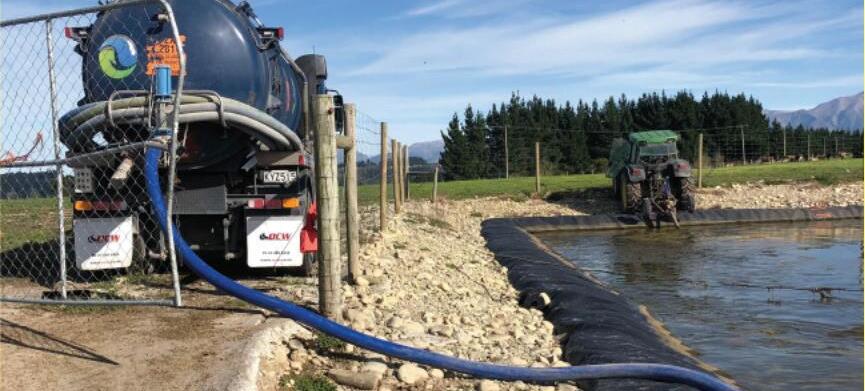



Better: as pasture production increases under clover dominant pasture, strong and resilient animals requiring less medication evolve.





In a world filled with peculiar statistical correlations, the connection between the number of irrigation professionals in our country and the severity of drought may seem as wayward as the linkage between the number of sales of umbrellas and the number of ice creams sold in the world.
Let’s consider the correlation between the number of irrigation professionals in a country and the severity of droughts.
] by Stephen McNally ] IrrigationNZ Principal ] Technical AdvisorThese examples humorously illustrate the concept of correlation without implying causation. In each case, there is a statistical relationship between two variables, but correlation does not necessarily imply a direct cause-and-effect relationship.
Some are simply a function of the number of people living in a country; the more people around, the more likely some will be lawyers, some will enjoy fishing or ice cream, and many will buy umbrellas, but they’ll not necessarily be the same people! The statements are coincidental or influenced by confounding factors.
However, beneath the surface of the whimsical connection between irrigation professionals and droughts lies a crucial discussion on the importance of maintaining professional competency in the irrigation sector.
In this regard, IrrigationNZ looks to highlight the serious matter of investing in the ongoing training and capabilities of irrigation professionals. This is becoming particularly important in the face of the likely increase in climate change-induced droughts.
While this may seem like a fanciful association, it serves as a reminder of a more serious discussion about the critical role these professionals play in managing water resources.
Picture this: a country with a high number of irrigation professionals may unconsciously appear better equipped to handle drought conditions. It’s as if the mere presence of these water-wielding wizards can stave off the arid woes that climate change brings.
However, the reality is not so magical. While the correlation implies preparedness, mitigation efforts, and a proactive approach to water resource management, there are other factors influencing this relationship, drawing on examples globally.
Countries with a higher number of irrigation professionals have generally invested more in water management infrastructure and drought mitigation strategies.
Governments that prioritise water management and irrigation allocate more resources, funding, and support for training irrigation professionals. Countries with a higher number of irrigation professionals have adopted advanced technologies and practices in agriculture and water management.
These technologies can enhance water efficiency and reduce the vulnerability of crops to drought conditions. Countries with a larger workforce of irrigation professionals may have a higher level of environmental awareness.
This focus, preparedness, and consciousness can lead to better water conservation practices and a practical approach to managing water resources, thereby minimizing the impact of droughts.
However, to achieve this status needs thoughtful planning and actions. IrrigationNZ has long maintained codes of practice for irrigation design and performance assessment focused on water and energy use efficiency, key elements in the strategic response to effective freshwater management.
As the country grapples with the impacts of climate change, such as increased droughts and flooding, IrrigationNZ has kept a focus on the use of its codes of practice by irrigation designers and irrigation performance assessors. This forward-looking approach aims to enhance the capabilities of irrigation professionals and elevate the standards of the entire industry.
IrrigationNZ recognises that maintaining professional competency is not only beneficial for individuals but is also paramount for the resilience and sustainability of the irrigation sector, addressing the impacts of extreme weather conditions.
Codes as Blueprints for Excellence: These codes serve as blueprints for best practices, ensuring that irrigation systems are designed, executed, and maintained with precision by competent professionals.
From efficient water usage arises environmental sustainability; the codes provide the basis for industry professionals in various facets of irrigation, laying the groundwork for responsible and effective water management.
As climate change intensifies, the role of irrigation professionals becomes increasingly crucial. Droughts and floods are not new to rural New Zealand, but the likely frequency and severity are no longer distant possibilities and present challenges that demand pragmatic and informed responses.
Irrigation professionals, armed with the knowledge and skills imparted by continuous training, are correlated as key participants in navigating water-related challenges.
Amidst the pressure to deliver services, businesses may be tempted to economize on individual employees’ professional development courses.
However, IrrigationNZ emphasises that this is a critical element which businesses should not overlook.
Professional development courses are not merely a cost outlay by the business but a necessity in an ever-evolving field of expertise. From staying abreast of technological advancements to adapting to changing environmental regulations, ongoing training ensures that irrigation professionals remain at the forefront of their industry.
It is an investment that pays dividends not only in individual career growth but also in the overall success and sustainability of the business, as well as meeting the expectations of the wider community on the environmental performance of the primary sectors.
The more severe the climate, the more irrigation professionals there will be, a necessary correlation and one that ensures a thriving and water-secure sector for generations to come.




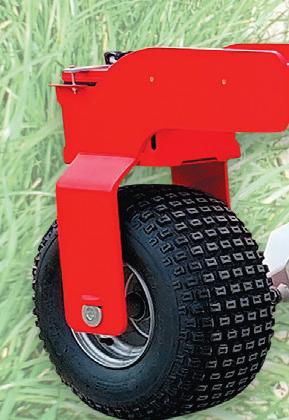









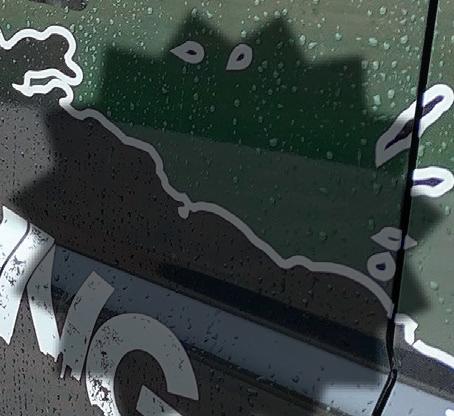



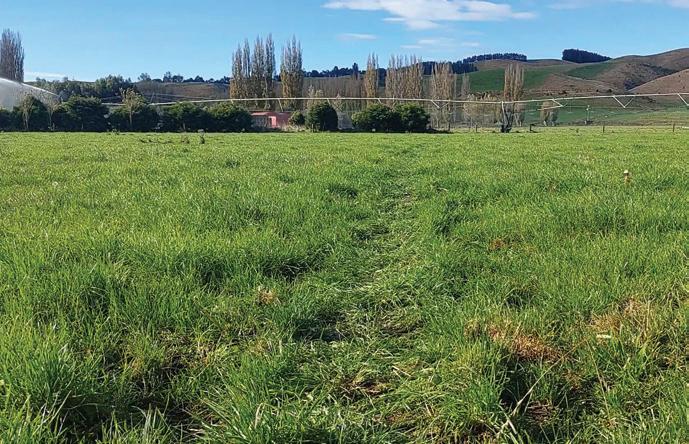
It’s

Ruts Plus pivot rut filling machines penetrate through the grass and soil cutting out the sidewalls of the pivot rut, pulling in sods of the already established grass root structure planting it back into the pivot rut. The farmer then follows behind wheel packing the windrowed material, with their own tractor. Leaving no depressions or bare grass on either side of the wheel track, all without bringing in extra material.
Condensed root structure increases the soils weight holding capacity. Once compacted it then combines together to create a solid mass. The grass continues growing and will no longer hold water the same as it did before. Here is an example: If you drove into a wet fully worked up paddock you would simply sink up to your axles, yet if you drove into the same wet paddock with established grass you wouldn’t have a problem driving around on it.
Ruts Plus have clearly proven after years of development to have the answer to pivot rut problems by transplanting the already established grass root structure back into the pivot rut. Not only ending up with extra grass but the grass also helps to absorb water. As we all know traditional costs of filling in pivot ruts with foreign material over the years have been skyrocketing.
Our system provides immediate results with very little time and expense to the farmer by simply following around the wheel tracks filling in any depressions that could hold water. Ruts Plus are currently operating four machines, each pivot rut filler can fill in up to fifty hectares per day.
Set hourly rate with a one off travel cost of $75 per machine anywhere in Canterbury. Prices usually range from $15 to $35 per hectare depending on conditions. There is no need to spend a fortune on bringing in extra material.






] with Dr andrew Dark
] Aqualinc
We’ve previously written in this column about this summer’s El Nino conditions, what it might look like for irrigation water demand and supply, and the likelihood of a drought this summer.
After what felt like a reasonably slow start, since Christmas we’ve had periods of hot, dry nor-west conditions that have resulted in some high evapotranspiration values at times.
Anecdotally we’ve been hearing that some irrigation systems have been struggling to keep up. This isn’t a surprise, as we’ve had several periods where evapotranspiration has been higher than the design capacity of most irrigation systems for multiple days in a row.
Climate scientists and weather forecasters have indicated that this year’s El Nino is likely to be quite different to previous summers such as 1997-98 and 2015-16 due to the current combination of conditions in the Pacific.
We are likely to see a long “tail” with dry conditions continuing through into autumn. The question on many people’s minds in Canterbury will be whether this also translates into a long irrigation season.
Based on modelled irrigation demand for mid-Canterbury, using measured climate records from 1960 through to present day (mid-February 2024), it is already shaping up to be an above-average summer in terms of irrigation water requirements, even though we don’t yet have a full season of data to compare to the historic record.
So, does history tell us anything about whether irrigation demand through to mid-
February is an indicator of the remainder of the season?
In general, there’s a reasonably strong relationship between what has happened up to this point of the season and what we’re likely to see over the next couple of months: for example, if demand through to mid-February was in the 90th percentile (i.e. drier than 9 years out of 10, on average) compared to the equivalent period in historic records, it’s highly likely that there will be a similar outcome for the season as a whole.
Some years can surprise us: 2015-16 was very dry overall (higher than the 90th percentile) for the full season, but in mid-February 2016 the irrigation demand was tracking around the 70th percentile.
Our modelling shows that at this point in the irrigation season (mid-February) the volume of water used for irrigation is, on average, 80% of the full season’s water use. While this percentage varies from year to year, it is reasonably consistent around the average for high-demand years.
A key message is that irrigation water-users who are operating within the constraints of an annual volume limit on their resource consents should keep a close eye on this, particularly if the volume of water used so far this season is more than around 70% of the limit.
After two relatively wet irrigation seasons, this could be a year when some people reach their limits, or don’t have much to spare.

El Nino also has implications for the availability of water. We’re fortunate in Canterbury that flows in our alpine rivers are typically higher in El Nino years due to the prevalence of westerly weather conditions.
This is not a guarantee however, and some rivers (both the alpine rivers and those with catchments that don’t extend as far in-
land) have already experienced restrictions this season.
Stored water, or groundwater that is not subject to restrictions based on river flows, are the only real solutions to this. If the latter part of the summer turns out to be very dry, it could result in re-focused thinking on storage development.














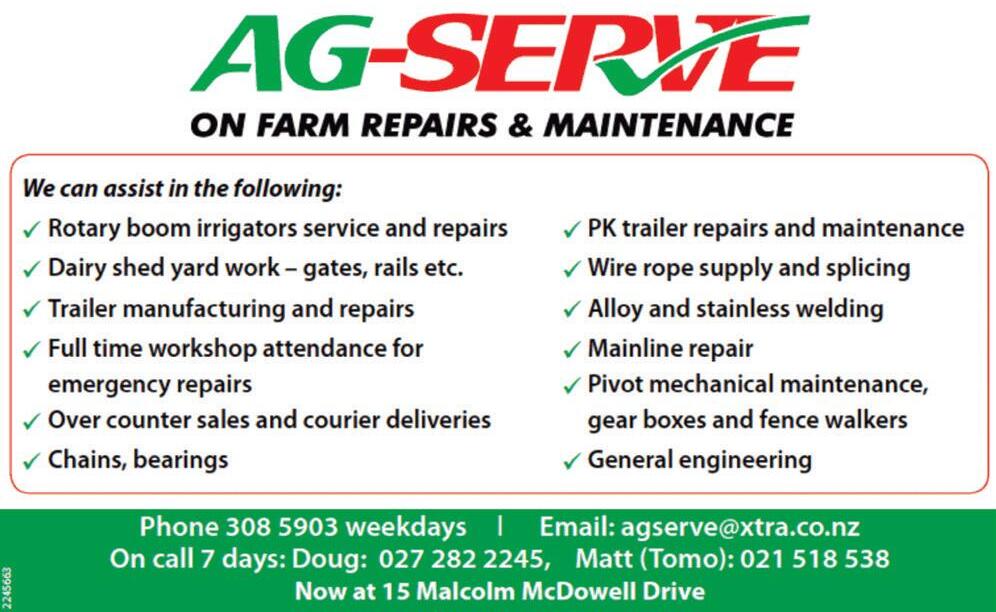

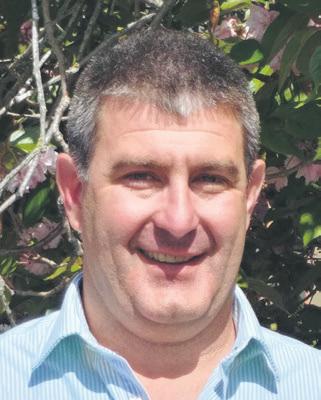
 ] by andrew curtis
] by andrew curtis
If you have telemetered devices on your farm that were installed from approximately 2009 to around 2020, you may be affected by the future 3G network shut down.
down from 31 August 2024, and Spark towards the end of 2025.
Many telemetered devices commonly used on farm may be affected including water meters, soil moisture sites, weather stations, water level sites, tractor steering systems, pump start/stops, pivot remote control, security systems and any other devices that talks to the internet.
The 3G network is being shut down as there are not enough spare radio frequencies to run the 3G alongside the new 4G and 5G networks.
Any devices still running on 3G when the network is turned off, will stop communicating and no data will be updated to the web. This may become a problem for some, particularly if your consent requires you to send
ter meter data, or if you rely on your phone to control your pivots or start and stop pumps. It’s therefore essential check your devices won’t be turned off unexpectedly.
While some providers have been starting to switch over their devices, there are still a significant number of 3G devices connected across the agricultural sector.
This means there will likely be many people wanting to change over at the last minute when technician time and new hardware will be at a premium. It’s therefore advisable to start putting a ‘changeover’ plan in place this winter.
‘Many farm devices may be affected by the the 3G shutdown including water meters.
vice is 3G or 4G. Some devices do have 3G or 4G written on them, but in most cases, you’ll need to check-in with your service provider. A rule of thumb would be the older the device the more likely this is the case.


The 3G network shutdown also creates an opportunity for farmers. If you have a mixture of telemetry providers, devices playing up or are fed up with your current provider, it is the perfect time to make changes. Turning data into useful information is a critical part of farming, and there are now options available to you that let you integrate different data to make better decisions.
Talk to the Primary Insight team if you want independent advice around your options. We work with a range of providers and can help you make the right decision for your farm, rather than being caught out at the eleventh hour.





This is my first column for 2024 and I want to start by acknowledging what a difficult time it is for many farmers, particularly sheep and beef farmers.
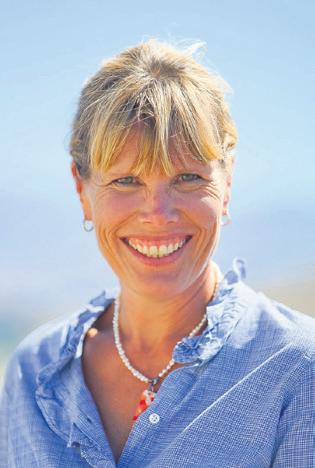
 ] by Nicky hyslop
] Beef + Lamb New Zealand Director
] Central South
] by Nicky hyslop
] Beef + Lamb New Zealand Director
] Central South
The
Lean
the people who make up your farm
This includes your livestock agent, accountant, banker, agronomist, fertiliser rep and farm consultant and work with them to see where savings can be made, and efficiencies gained. We are all in this together.
Despite the challenges, I am quietly optimistic about the future of our industry and particularly the calibre of young people entering our industry.
I am continually blown away by their fresh ideas, energy, and willingness to learn. A re-
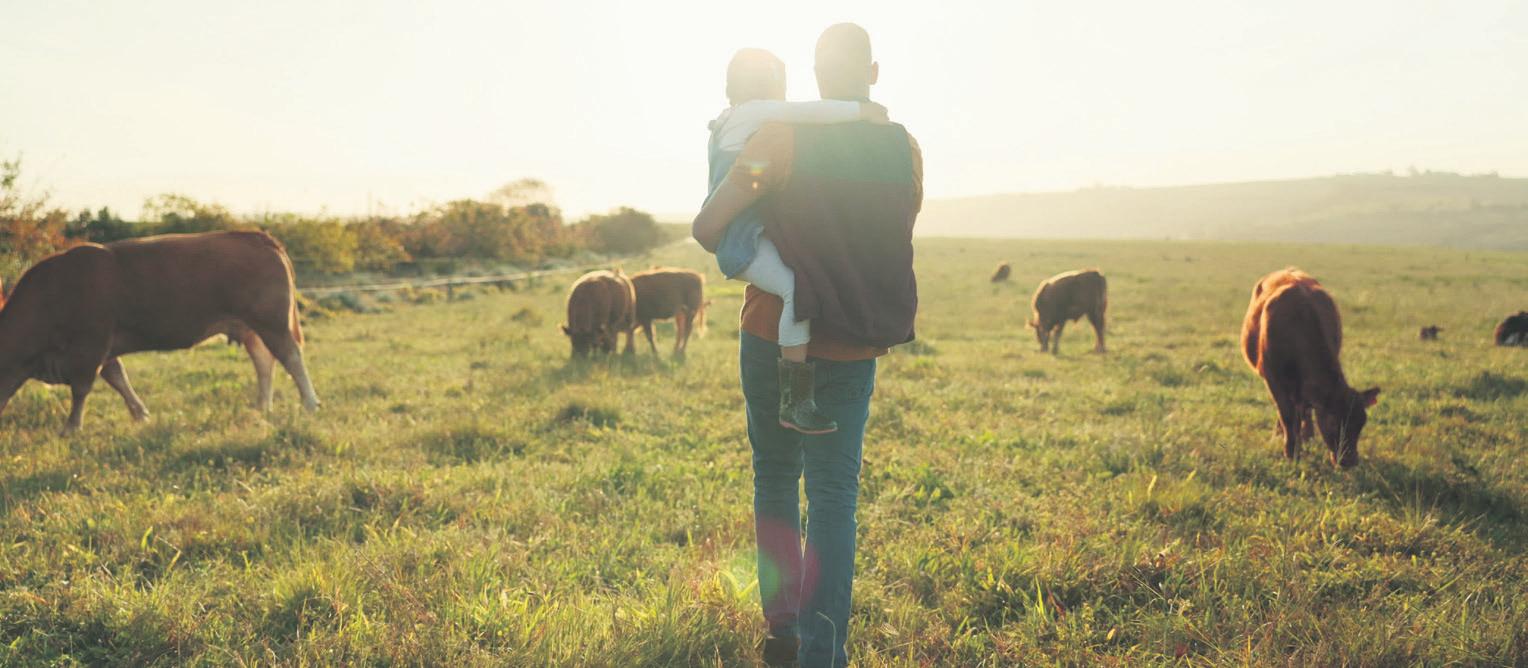
cent FeedSmart workshop in the Hakataramea Valley attracted over 30 predominately young people all engaged and wanting to learn how to make the most effective and efficient use of their feed resources.
While I wasn’t able to attend a recent forage-focused field day at Inverary Station, many people commented to me about the calibre of presentations by the younger farm staff and managers.
Similarly, the great Growing Future Farmers initiative is going from strength to strength.
Last year 110 young people were enrolled in the programme which gives them the opportunity to learn from experienced farmers, while farmers benefit from young people’s enthusiasm and energy.
This is just one of a number of farm training programmes that are on offer.
The Meat Industry Association offers many undergraduate and graduate scholarships for students wanting to work at that end of the supply chain, and these are an effective way of retaining talent in our processing industry.
Beef + Lamb New Zealand’s Generation Next programme is aimed at farmers or farm employees and helps build their skills, knowledge, confidence, and networks.
Run over a six-month period, the programme includes three workshops as well as on-line learning. Topics include financial management, genetics, personal development, industry issues and technologies. I really encourage anyone under the age of 40 and actively working on a farm to sign up.
There is a gold in being able to pass our experience down to young people, but equally we can lean on their energy, fresh ideas, and new ways of thinking.
It is important that we continue to encourage school leavers into our industry and give them opportunities to learn and flourish.
As our farm ownership structures continue to evolve, there are fantastic opportunities for managers as well as all the people that make our farms tick.
Technology will also become increasingly important in our industry, and we are fortunate to have a generation of digital natives coming through who embrace technology and will use it to “make the boat go faster.”
I am very confident our industry is in very good hands going into the future.



The recent news around rat infestations haven’t been great, and if they’re a problem even in city supermarkets, you can bet there are a whole lot more out there.
Advertorial supplied by UPL NZ
Many people living rurally will be familiar with the morning ritual of turning gumboots and work boots upside down and giving them a little shake before putting them on – just in case a furry pest had taken refuge there. Or having to deal with a live ‘present’ the cat had brought in.
The balance people most want to achieve is dealing with rodents quickly and efficiently, while keeping companion and farm animals safe.
Generation Soft Bait gets it exactly right, according to an expert on rodent control, Mike Goodwin, Regional Manager South Island Central from UPL NZ Ltd.
“Rats, even those who are very wary feeders, can’t resist it. The specially developed vegetable oil and crushed grain-based formulation gets rats’ attention faster, with the soft bait’s paper ensuring the tempting aroma disperses widely.”
The smallest non-dispersible bait on the market, Generation Soft Bait kills in a single feed; 2-3 g kills a rat and 0.3-0.4 g a mouse. To put that in perspective, a rat’s average daily intake of food is around 20 g/day while a mouse consumes around 3 g/day.
Naturally, no-one wants bait ending up where it shouldn’t.
Mike says Generation Soft Bait won’t leak or melt and has very good moisture and heat tolerance making it practical in a wide range of farm, lifestyle, and residential applications.



It also contains Bittrex, a bittering agent that reduces the risk of consumption by non-target animals.
That’s just as well as Generation Soft Bait has as its active the most advanced anti-coagulant on the market, difethialone 25 ppm, which rodents can’t detect. There is no known genetic resistance among rodent populations – wild or lab. (They tested both. Just to be sure.)
Mike says getting ahead of rats’ astonishing ability to multiply is the best way to protect property, grain, and feed. “Using bait proactively is the best strategy – and
will save money down the track.”
Rats can produce litters of up to 12 every 2-3 months.
Mike warns rodents cause more damage than we’re probably aware of, including fires in vehicles and buildings due to chewed electrical wires. That’s on top of damage to buildings and loss and contamination of feedstuffs.
Among the most serious mammalian pests known to man, the rodents are destructive, dirty, and disease-carrying. A single rat can produce 50 droppings and 50 mL of urine daily.


and pets.
New Zealand has four species of introduced rodents – the Norway rat (Rattus norvegicus), the ship rat (Rattus rattus), the Polynesian rat (kiore), and the house mouse. The ship rat is the most common, and the smaller of the three rats.
Remember: Poisons should always be handled in accordance with the label and stored out of reach or children, cats, and dogs, ideally in a locked cabinet. Bait stations must be used.
Generation Soft Baits and bait stations are available exclusively from PGG Wrightson.


























































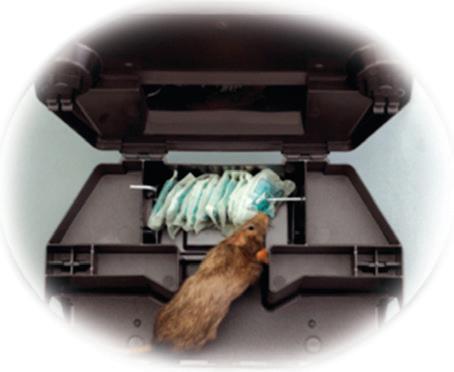















Deer farmers in parts of northern north and inland south Canterbury have been dealing with drought, along with those in Central Otago, Marlborough and the south of the North Island.
It’s a very different picture to this time last year when Cyclone Gabrielle hit the North Island and is the sting in the tail of the current non-typical El Ninõ weather pattern.
Farmers in Marlborough visited by Deer Industry NZ (DINZ) last month had started feeding early in the dry and sacrifi ced their target liveweights too. They say it’s essential to quit fi nishers early and keep replacements growing, as long as you can get killing space.
Setting goals and responding as the season progresses is crucial, they say, as is having a water plan. Despite the adverse events, farmers continue to have confidence in the industry and have been seeking to improve their genetics, as the fi nal results from this year’s stag sales showed. They featured more interest in elk and wapiti and a trio of three-year-old stags fetching over $100,000 apiece.
While underlying demand is still good for New Zealand’s deer products, exporters will need to carefully navigate the global economic uncertainty and geopolitical issues in the 12 months ahead, DINZ markets manager Rhys Griffi ths has noted.
Venison had a positive chilled season, for which contracts peaked at $10.50/kg last year, “and inventory has worked its way through the system,” he reports.
The expectation is for similar chilled prices to last year, at this point.
Exporters have hosted positive visits from US and European buyers this fi rst quarter and negotiations for new season contracts are underway. These are expected to be fi nalised at the end of summer.
New Zealand’s deer velvet exports to China increased by almost $20 million in December, compared to the same month last year, as importers and exporters worked to deal with December’s changes to China’s import regulations for frozen velvet.
This was a sign of the “pull coming from China” with importers trying to conclude deals before 30 April, when this season’s velvet production must be cleared into China, Griffi ths says.
DINZ and Ministry for Primary Industries (MPI) offi cials continue to work with Chinese counterparts to agree clear import guidelines.
The Deer Velvet Access Group (DVAG), a

subcommittee of the DINZ board, is working on the issue and met in early February to undertake scenario planning to cover all eventualities. In addition, DINZ has appointed a well-qualifi ed project manager with expertise in the market to manage the issue.
Meanwhile, the search is now well underway for a new DINZ chief executive, following current CEO Innes Moffats’ departure earlier this month.
Deer Industry NZ executive chair Mandy Bell will be looking after the DINZ fort until a new CEO is appointed.
Until an appointment is made by the DINZ board, chair Mandy Bell has stepped in as executive chair, supported by other board members, to “keep up the momentum and support the DINZ executive team”.
Among other things, the DINZ team is preparing for this year’s Deer Industry Conference on 8-9 May in Napier, themed “An incredible legacy – the past, the present, the future”.
Deer farmers, and others involved in the deer industry will network at the annual event listening to topical talks and presentations and spending half a day at the fi eld day hosted by the NZDFA’s Hawke’s Bay branch.
At the annual Gala Dinner – always a highlight – they will hear who has won this year’s: Deer Industry Award, for the person judged to have made the most outstanding contribution to the industry; the Matuschka Award, for the grassroots farmer and
Frustrated: Wairau Valley deer farmers Giselle and Marilyn Shewan says tey prepared well for the drought, but the lack of killing space for their cull of velvetting stags has been frustrating. Photo:
unsung contributor to local area activities; and the Deer Industry Photo award.
registration is OPEN NOW at https://bit.ly/3wjcPOY where there is also up-to-date programme details and accommodation. See you there.

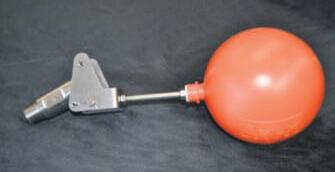

























522
PH:
PH:
724
PH:
PH:





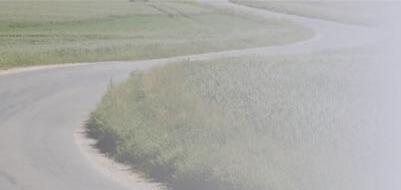

In the last few months of 2023 there were at least four deaths from the use of quad bikes. Another accident with an all-terrain vehicle (ATV) claimed the lives of two passengers. There are also many other accidents with these vehicles which cause serious injury.
Quad bikes are fast and nimble and should only have a driver and no passengers. They are not stable vehicles with their high centre of gravity and narrow wheelbase. There is no requirement for them to have roll over bars or seat belts or crush protection devices or helmets.
The most common cause of the injury is where the quad bike rolls over and crushes the driver and/or any passenger.
Children are very prone to serious injury from riding on quad bikes and should not be permitted to ride either as a driver or passenger until they are 16. There are no safety bars to provide some protection from such accidents. At the very least it should be mandatory for all quad bikes to have roll over bars. Care needs to be taken when loading gear onto quad bikes due to the changes in the
centre of gravity which makes the quad bike unstable. It would be preferable only to have a minimal load of additional items. Any loads should not be too heavy, wide, or unbalanced as this can easily cause accidents.
It is vital to adhere to the manufacturers guidelines when using a quad bike for the safety of the rider especially when carrying additional items.
When visitors, who are not accustomed to farm machinery, come to the farm, they should not be taken on a quad bike ride to look at the farm. There are more suitable vehicles for that purpose.
All-terrain vehicles are like quad bikes except that they frequently have a different number of wheels and are designed for offroad use.
When a life is lost or someone suffers life changing injuries as a result of an accident on the farm, whether with a quad bike or other farm vehicles or machinery, the catastrophic loss has a profound effect on everyone involved.
This article has been prepared by Bessie Paterson, a partner at ronald W angland & Son, Lawyers, 2 chapman Street, Leeston








































As the 13th anniversary of the Christchurch earthquakes came and went the memory of the 16 workmates who died in the rubble of our building came crashing back, but it also jolted me into action about being in touch with others who I have drifted apart from.
I bet there are people you can think of that you haven’t rung for months, or even years. We all get busy, focused on life and immediate things in our worlds and time races by like a river in flood.
Picking up the phone I rang several chaps I haven’t spoken too for far too long. I am not going to admit how long, but the reception from them was heartwarming.
Yes, they could have rung me as well, but they were tied up in their own situations as I have been.
As a funeral celebrant I see the joy in people who attend a service seeing others they had lost contact with.

 ] by Solis Norton
] by Solis Norton
I also see the other aspect, people who came to say goodbye to a person they had lost communication with.
While you are living your own life and filling your days with what you do, cast your mind out and wonder for a while what your mates may be doing.
One chap I rang was delighted to hear from me and admitted that he was in huge pain but surgery had helped a lot and he would be out of hospital soon.
Guilt hit me hard, if I had known, if I had rung him, I would have visited him in hospital and added something positive to his day. We will be having lunch together once he is back on his feet.
Another mate was still grieving the pass-
ing of his wife several years ago, again he was so grateful to hear from me and my call was huge in his mind as it was a diversion, and yes, contact with someone other than strangers in the supermarket.
Being old and lonely is a terrible thing, and very common. Family can fill the needs for conversation and contact, but there is nothing greater than a mate checking in for a chat. Memories of times shared, a chance for them to talk about their family, and talk of the local and world scene.
Depression is the silent and invisible enemy, and I will continually fight it amongst my friends by simply keeping in touch.
I am sure you will do the same to those in your circle.

More and more often it seems impossible to work out whether the ‘progress’ we hear about is truly forward or backward.
house. This image brought back memories of kerbside services in Dunedin’s North East Valley 40 years ago. Nostalgic memories. Two or three bins outside every house for rubbish day once a week.
Steel, they were rather than plastic and about thirty litres in size. No recycling. We didn’t even pretend to recycle.
A classic example sits next to my computer at this very moment. It’s a pamphlet from the Dunedin City Council introducing the new kerbside bin system. To help us all reduce waste and protect the environment, it says. Every household gets a new bin for nonfood rubbish items which will replace the plastic rubbish bags. Every household will also get another new bin for food rubbish. Together with our other recycling bins, that will be a string of four or five for each home. The cost of this progress is another 16.5 million or about $350 per home.
A string of bins out the front of every
The bins were emptied by teams of friendly young men running behind the rubbish truck, grabbing each bin as it drove passed and quickly emptying it into the back before returning it to the kerb and clanking the lid back on.
You could hear them coming from blocks away. Vapour from their heavy breathing hanging in the air on those cold winter mornings. It kept them fit for footy and provided a valuable public service. They would even let kids go for a ride on the back of the truck for a block or two on Saturday mornings. We the kids loved it.


We were careful and they were careful with us. That was health and safety. Today those guys are all at the gym lifting weights or running on the spot, not a kid in sight or a public service.
The rubbish trucks shared North Road with our electric bus service. Kerbside electric public transport! An aspirational concept today. How was that cost effective for a population of just 120,000? Seems too good to be true. It’s not.
Those long steel arms rising up from their backs would crackle and spit on the first bus of the morning, still an hour or two before light as its runners knocked the frost off the overhead wires. The smell of coal smoke sat in the valley from fires damped down to last the night.
The milk boys and the paper boys would do their rounds too in that early morning chill. Whole neighbourhoods would leave money and returned empties in their letter-
boxes every night for their fresh milk.
The coins so seldom stolen there seemed no need to change. Local supply, recycled milk bottles, kids working to earn enough money for something they dreamed of. Like a fancy new mountain bicycle with fifteen gears. There was nothing electronic to want. No gaming. No home computing of note.
By the time we went to school in the morning we might have had several interactions with others in our community providing these kerbside services. No Google, no Facebook, no Instagram, no YouTube. Just the passing of pleasantries and a bit of gossip for the day with familiar faces.
Maybe I’m glorifying it. Maybe I’m not. I can’t remember well enough to know. Or to know whether today we’re going forward or backward with this string of fancy new bins. But I’ve a hunch we may have seen the road up ahead before and a fair while back. It was actually pretty good.



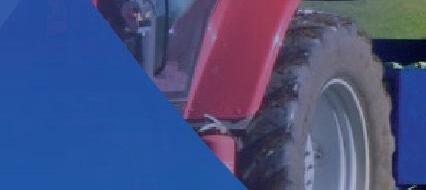

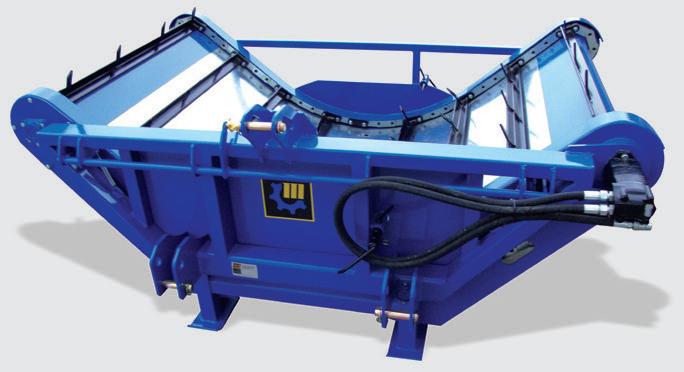
•
Large













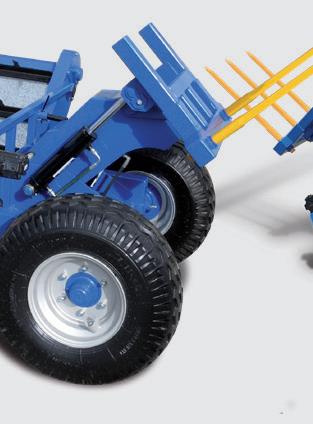
JCB
2815 hours on the clock and well maintained by previous owner. Comes with 3 buckets. Very tidy.
JCB 55Z 5.5T EXCAVATOR
Only 340 hours on the clock, like new condition, save thousands on new
JCB JS130 13T EXCAVATOR
less than 100 hours and in excellent condition, would suit a new buyer wanting to save more than $25,000


































